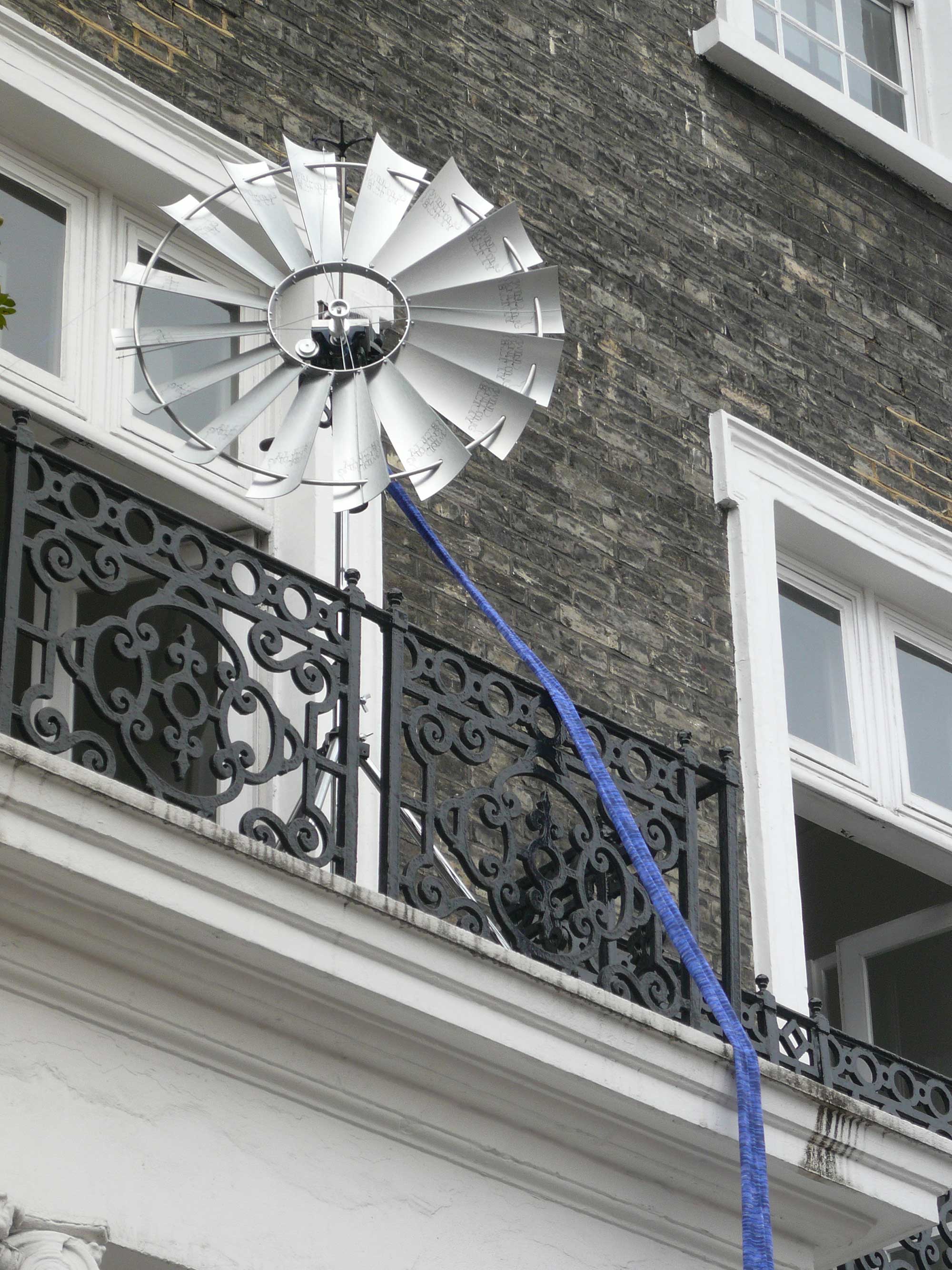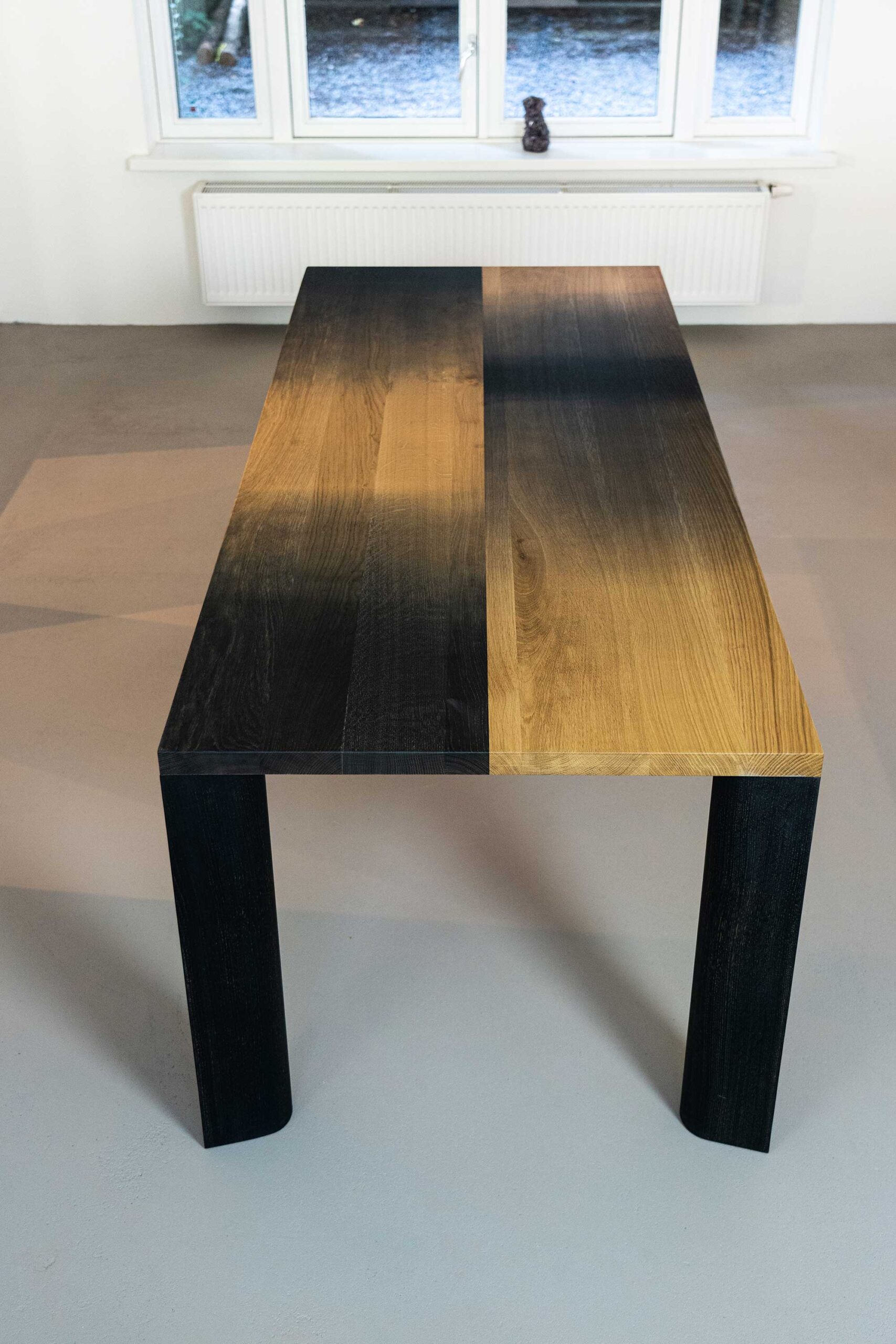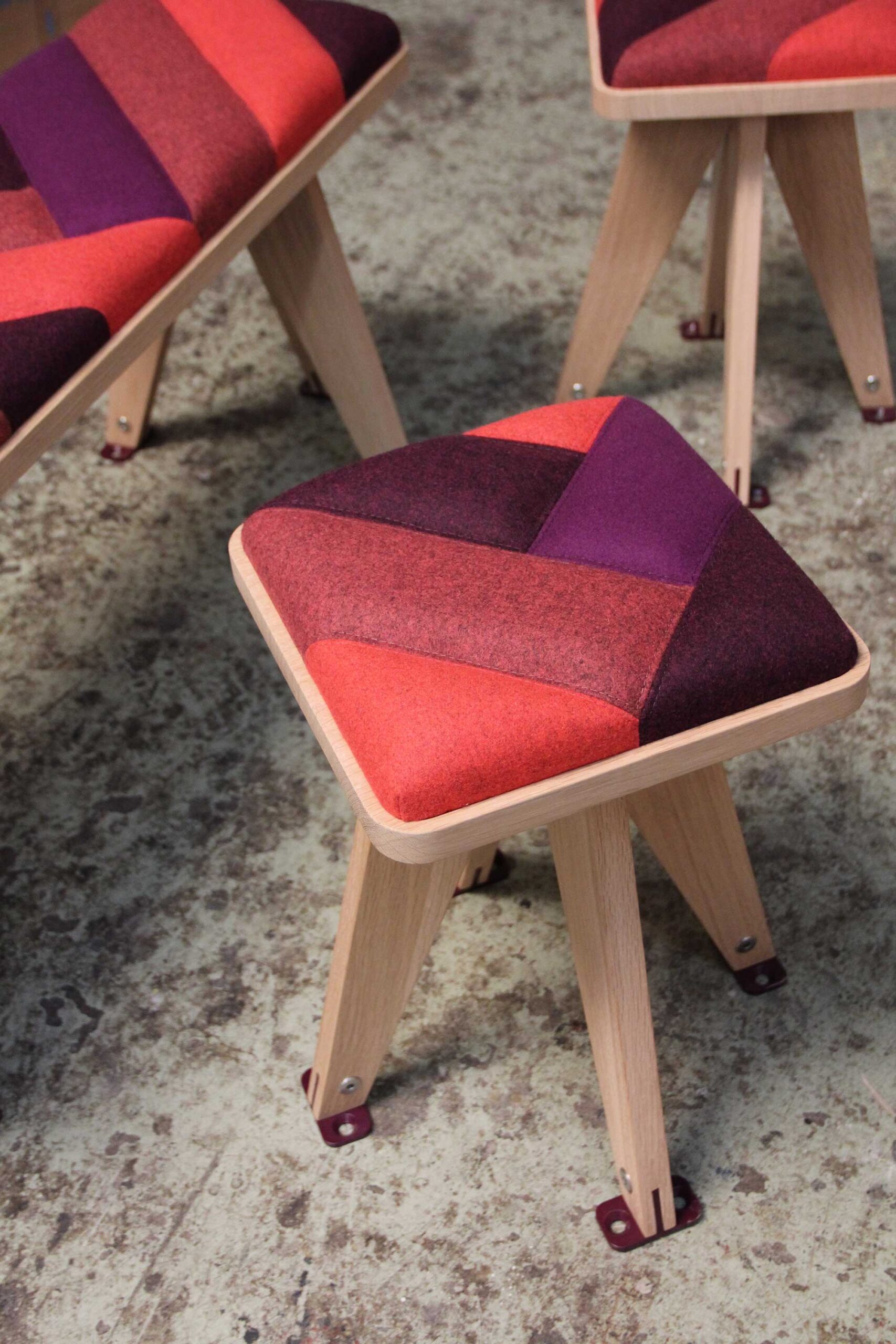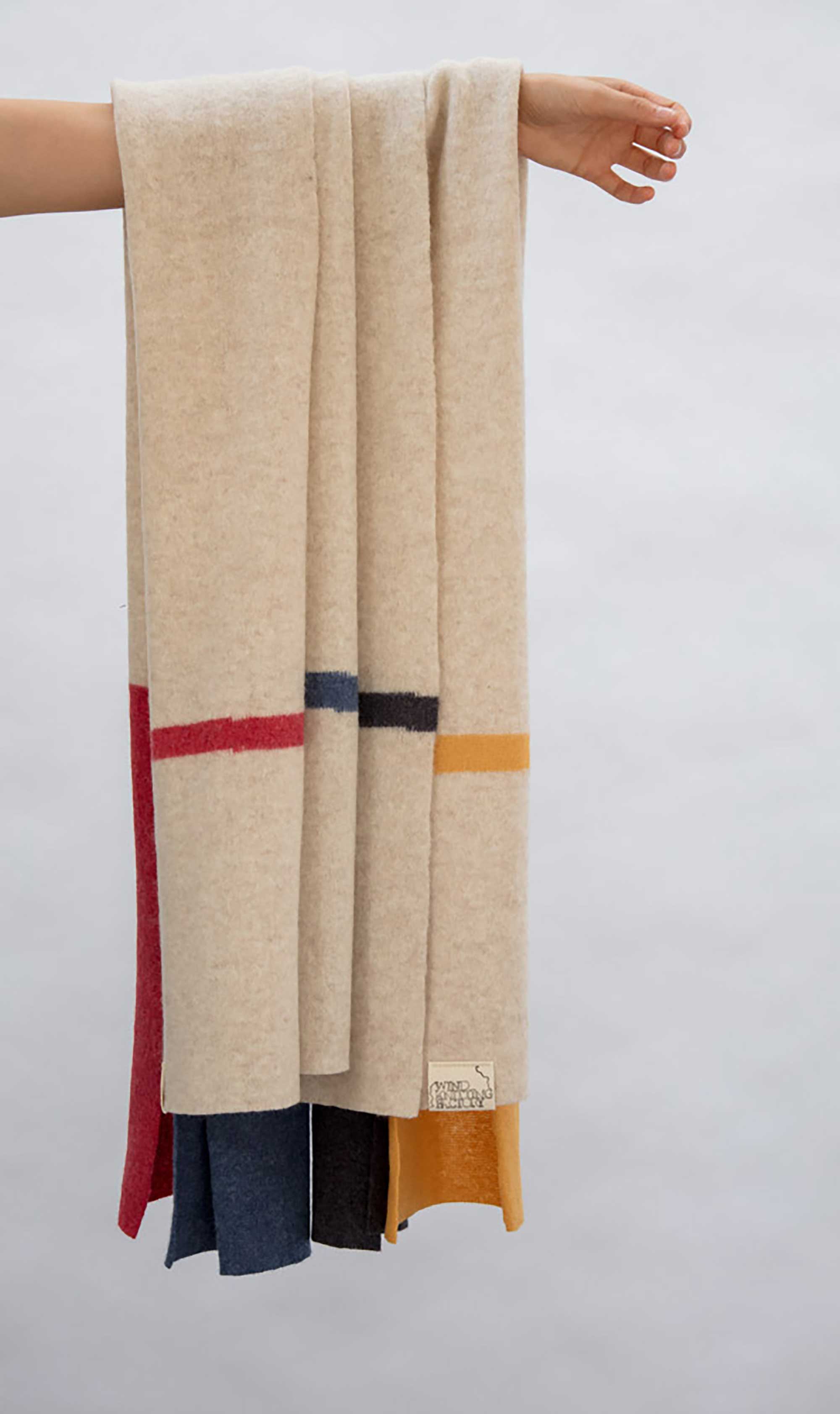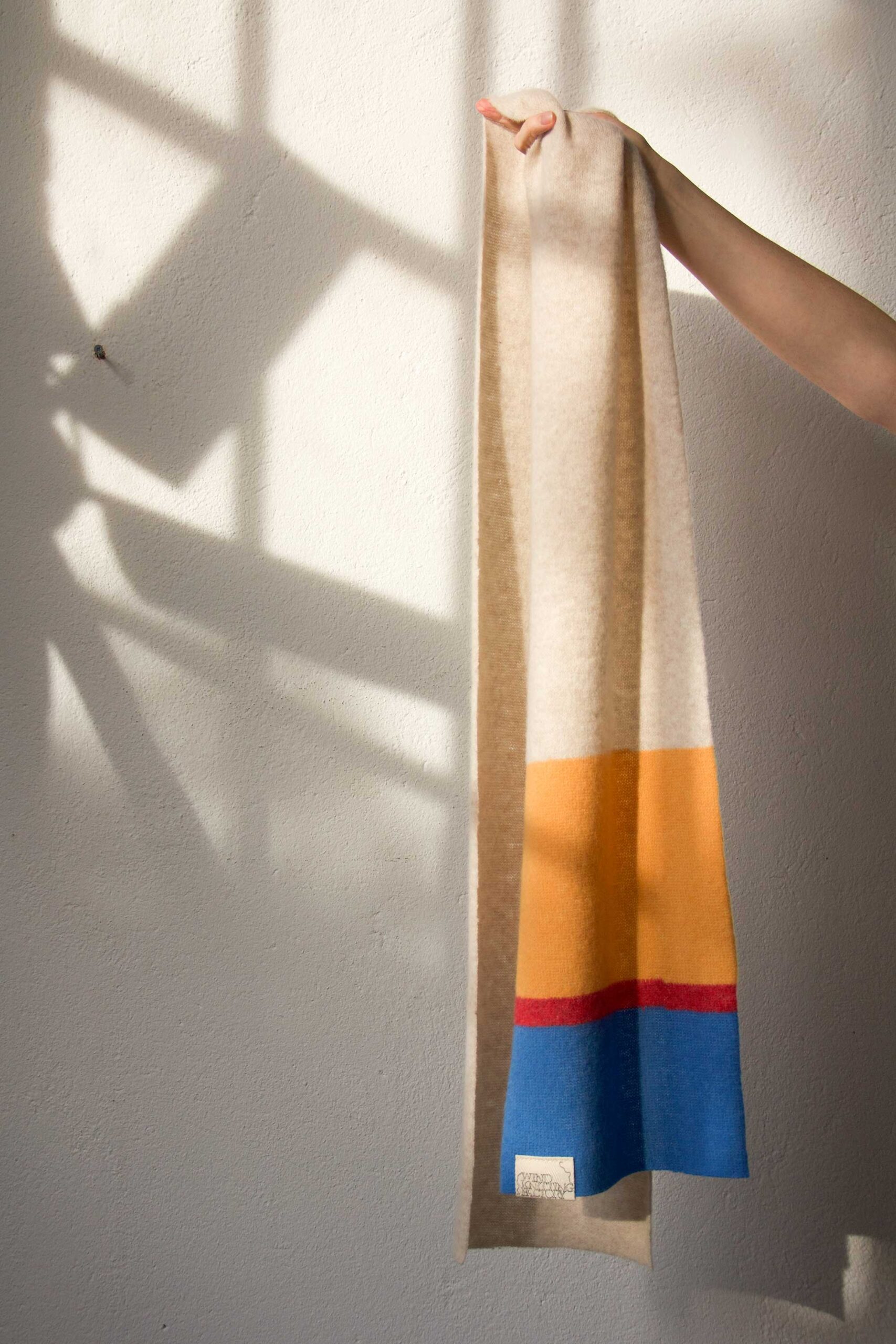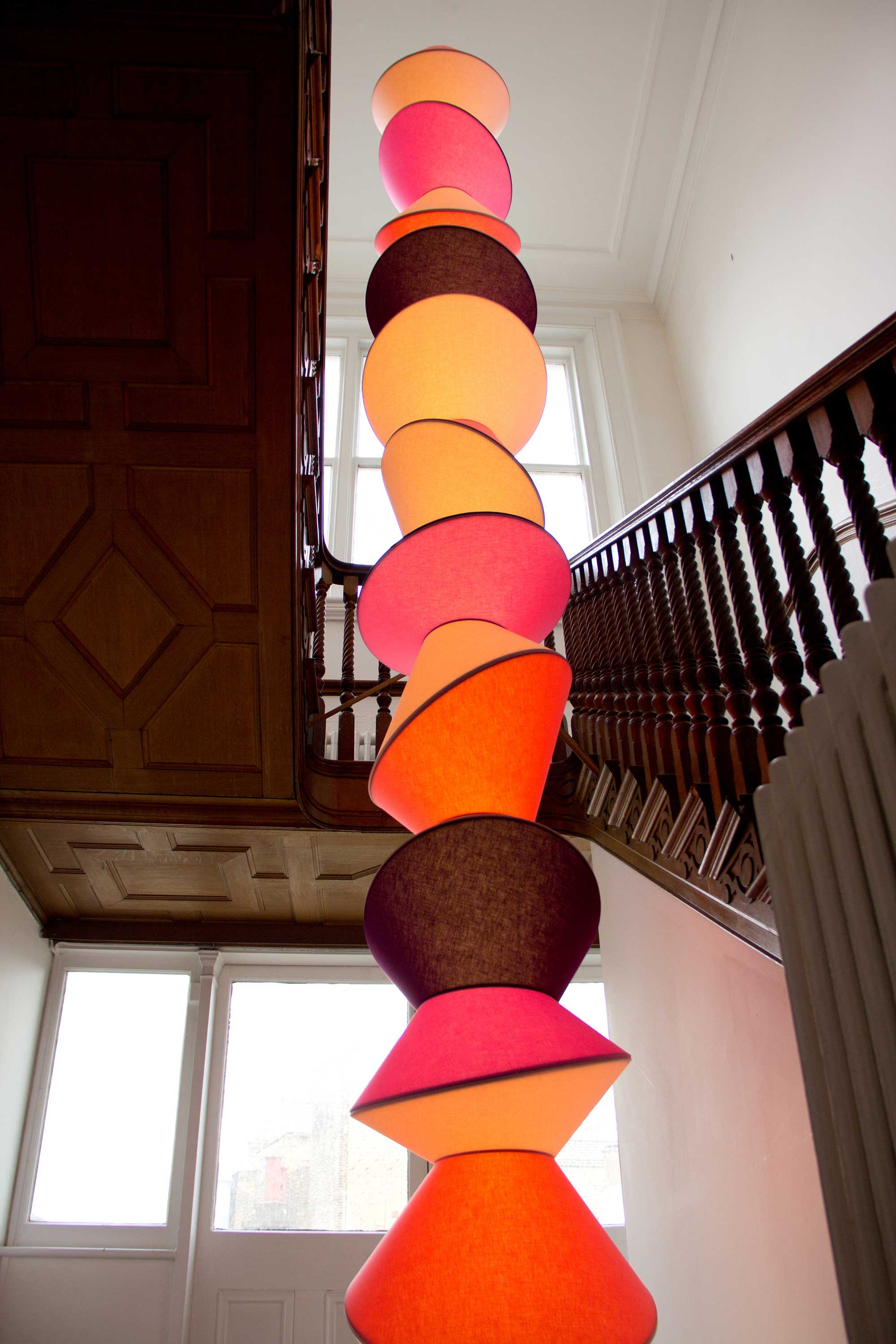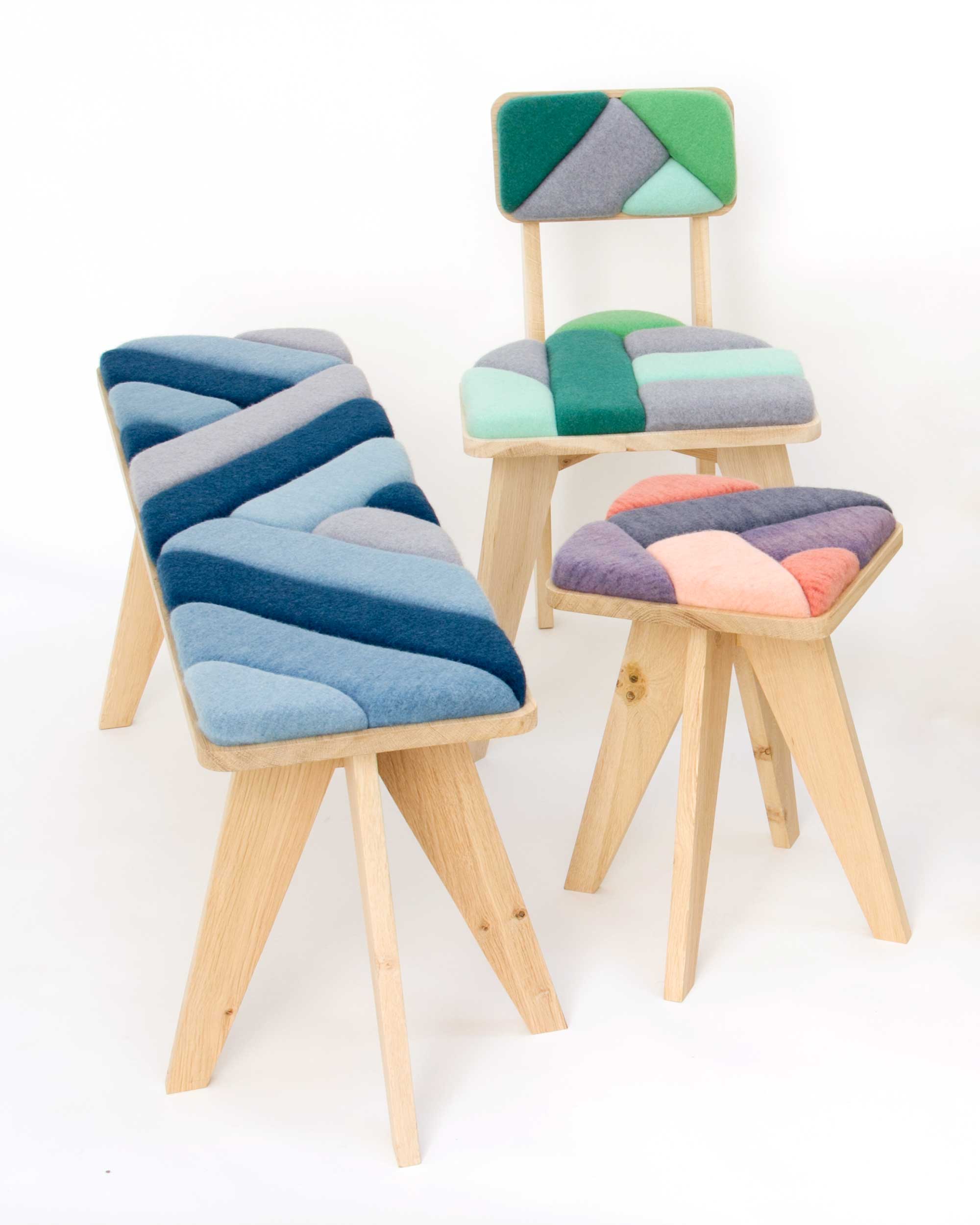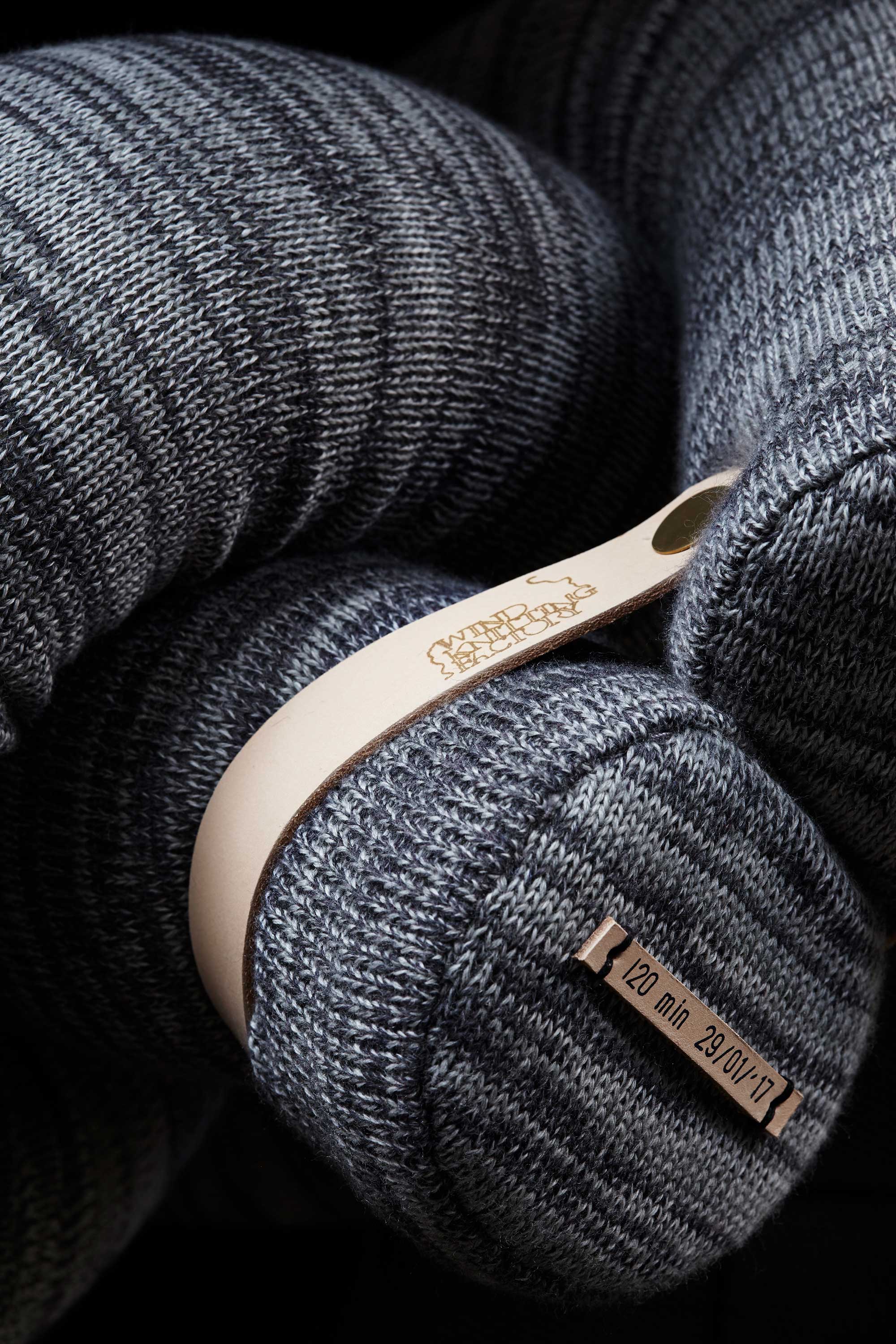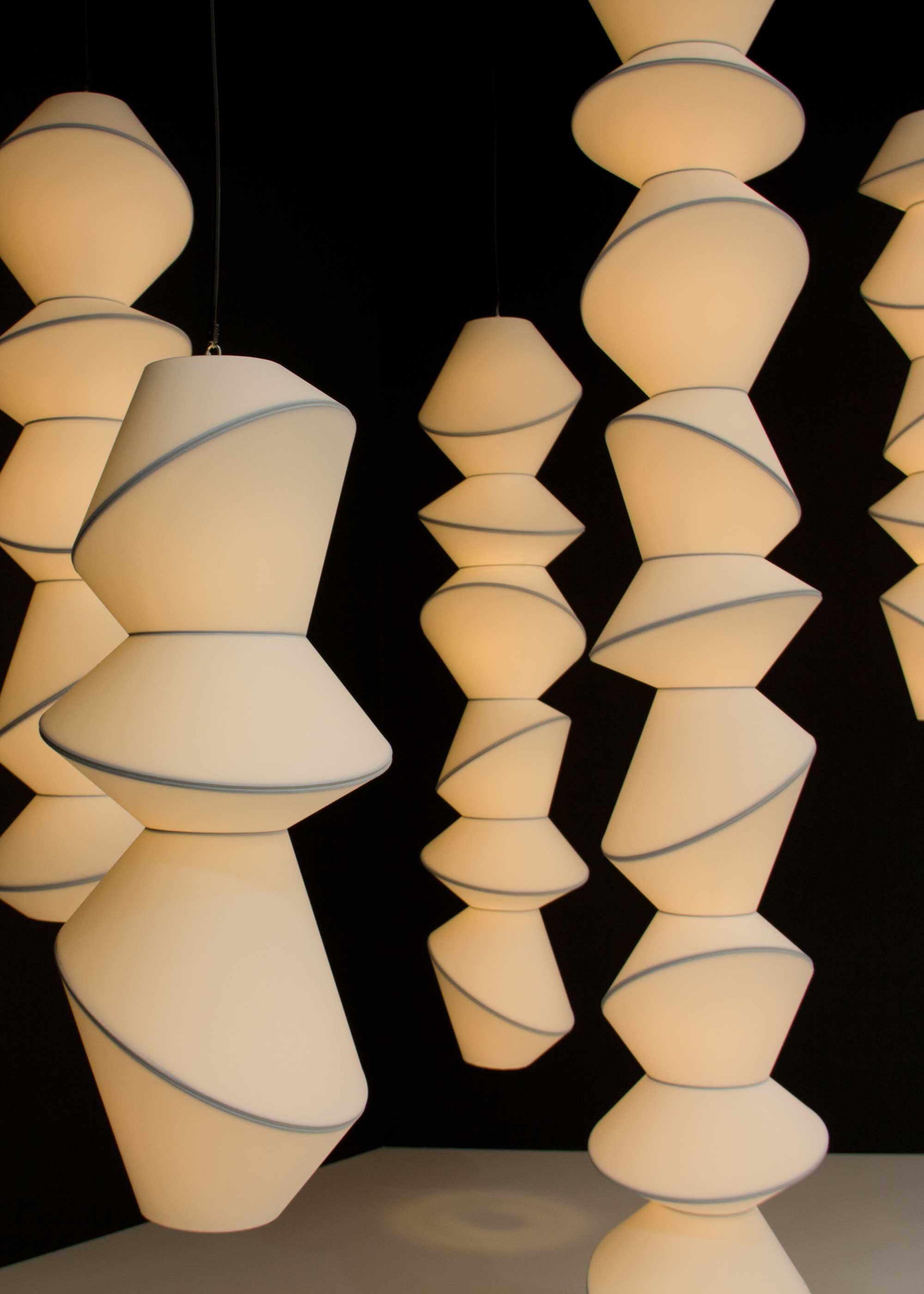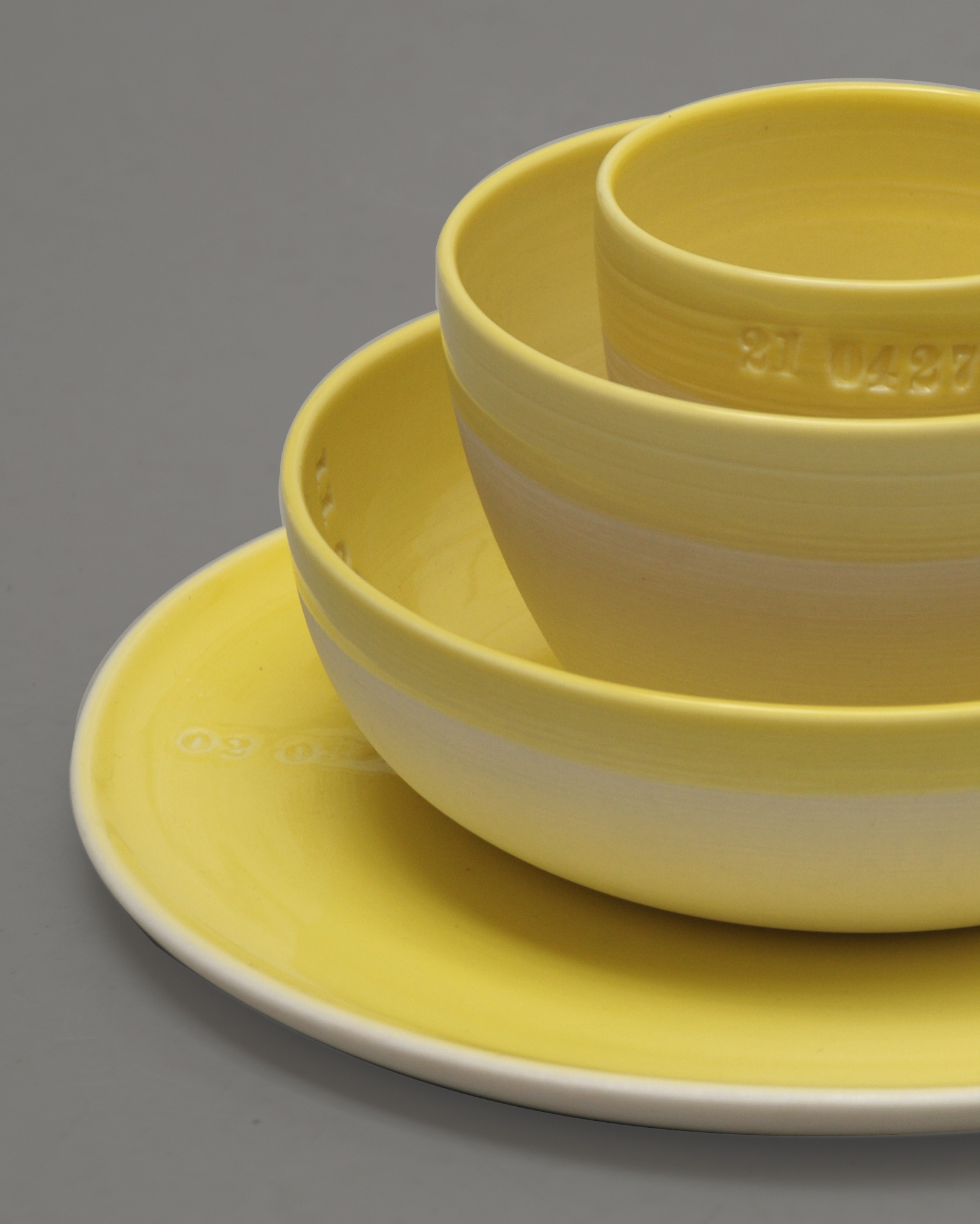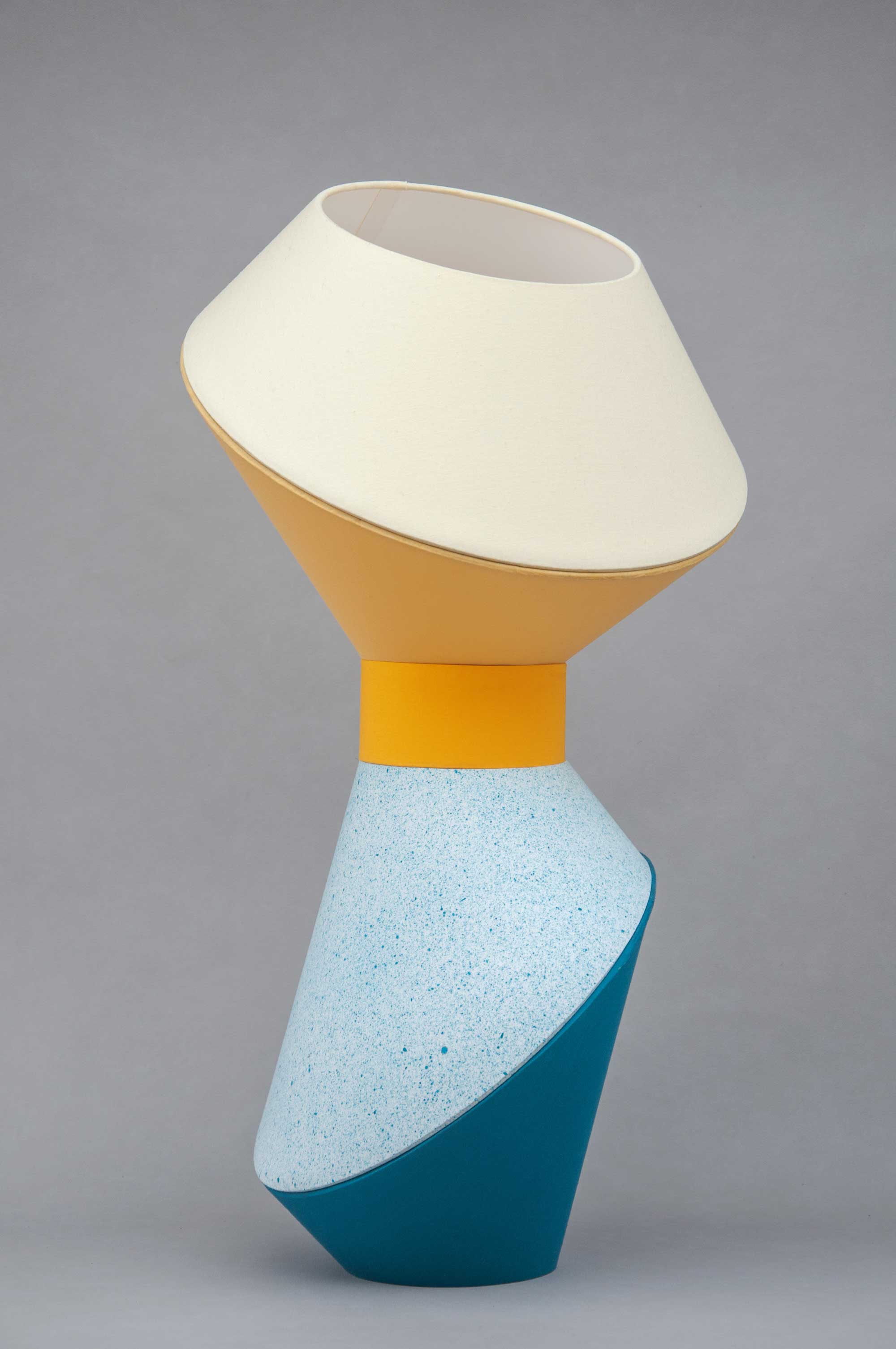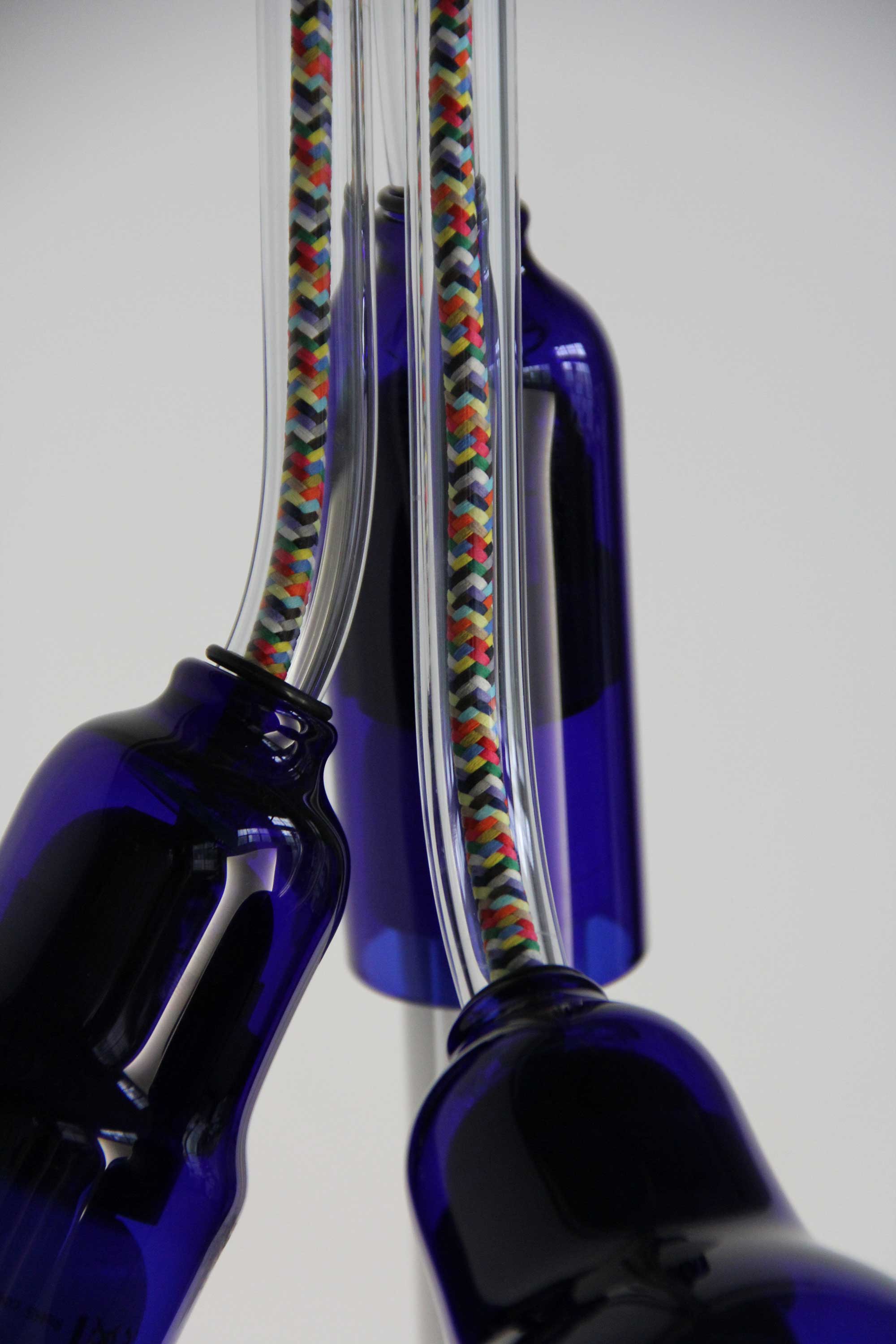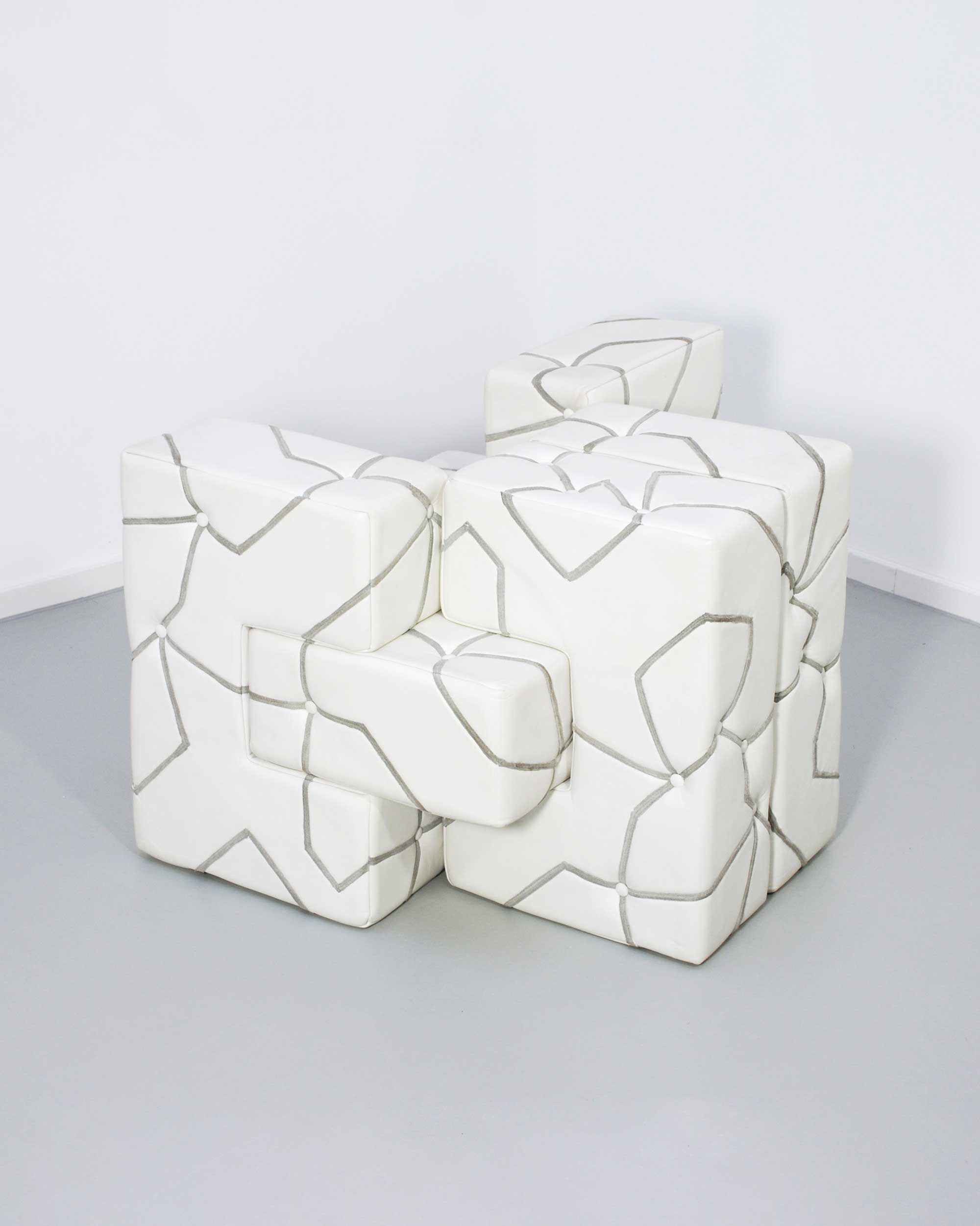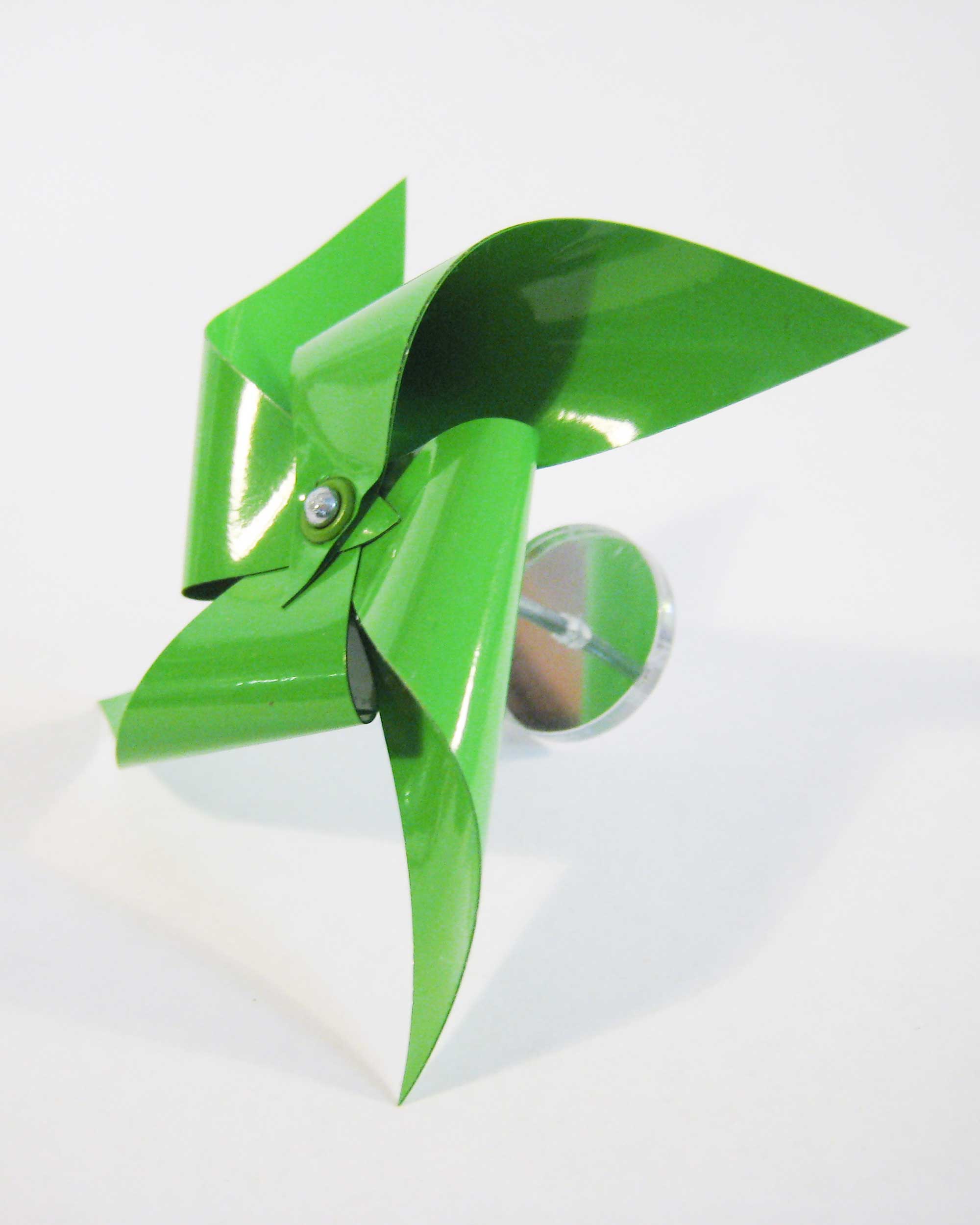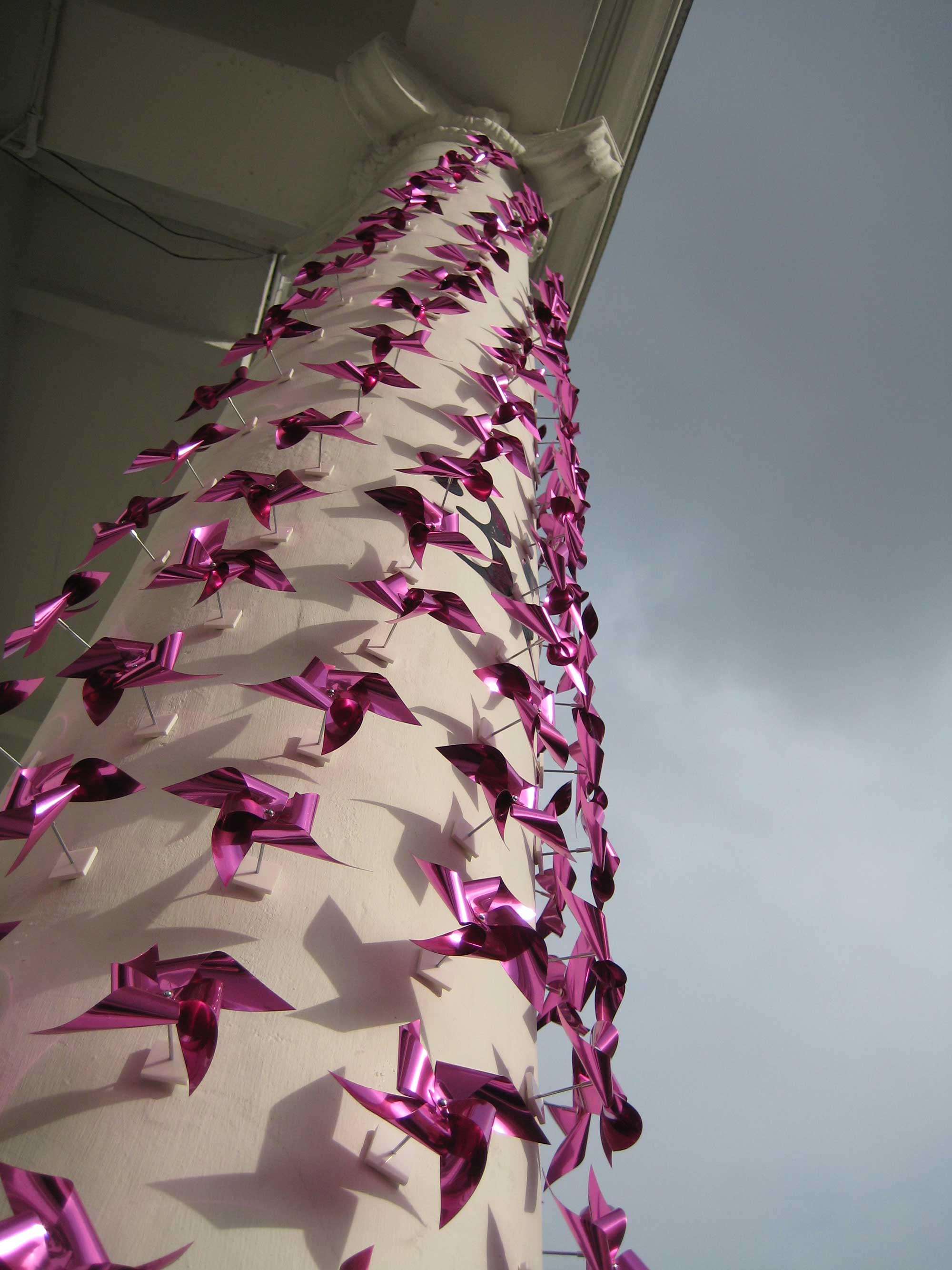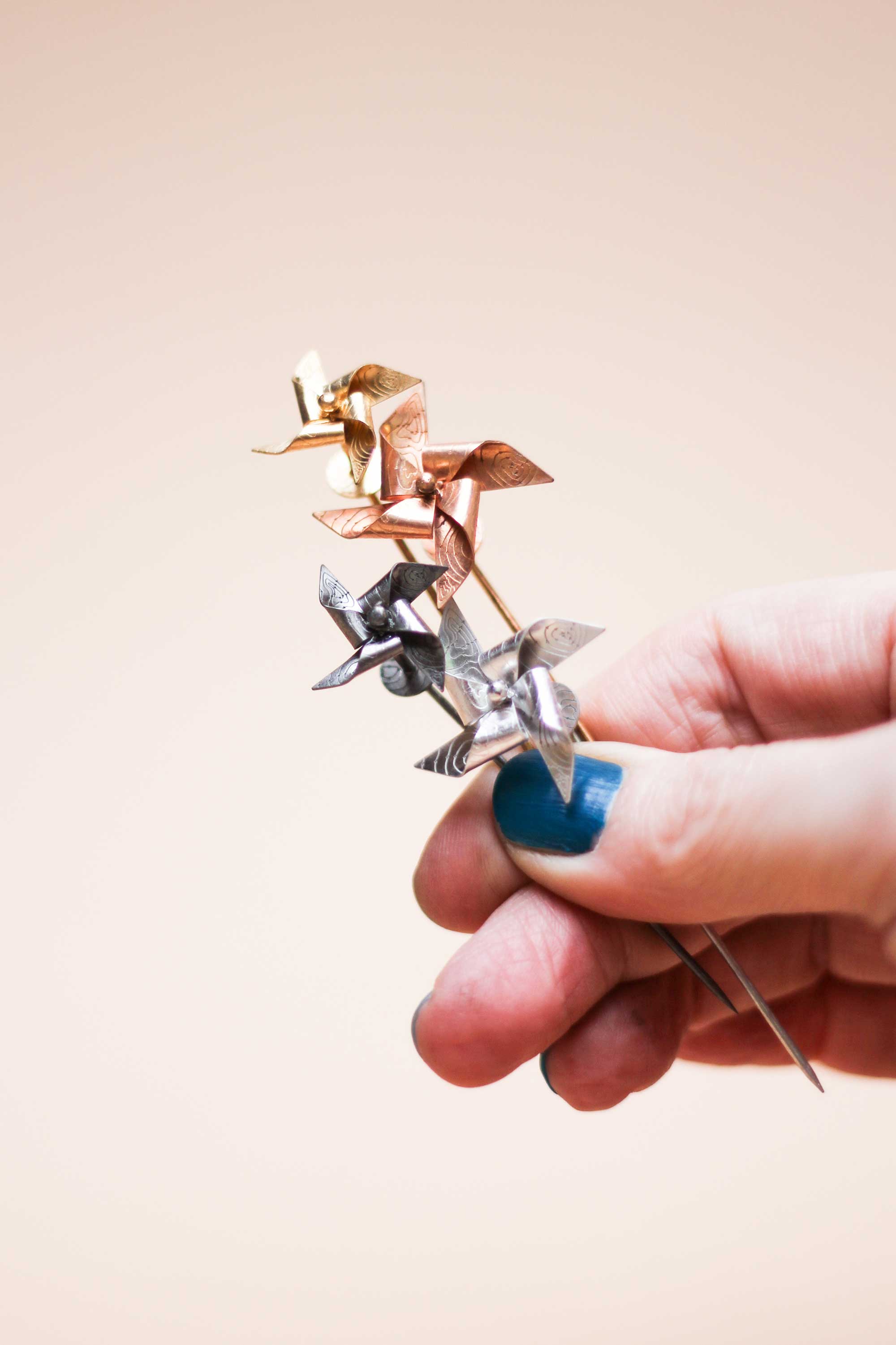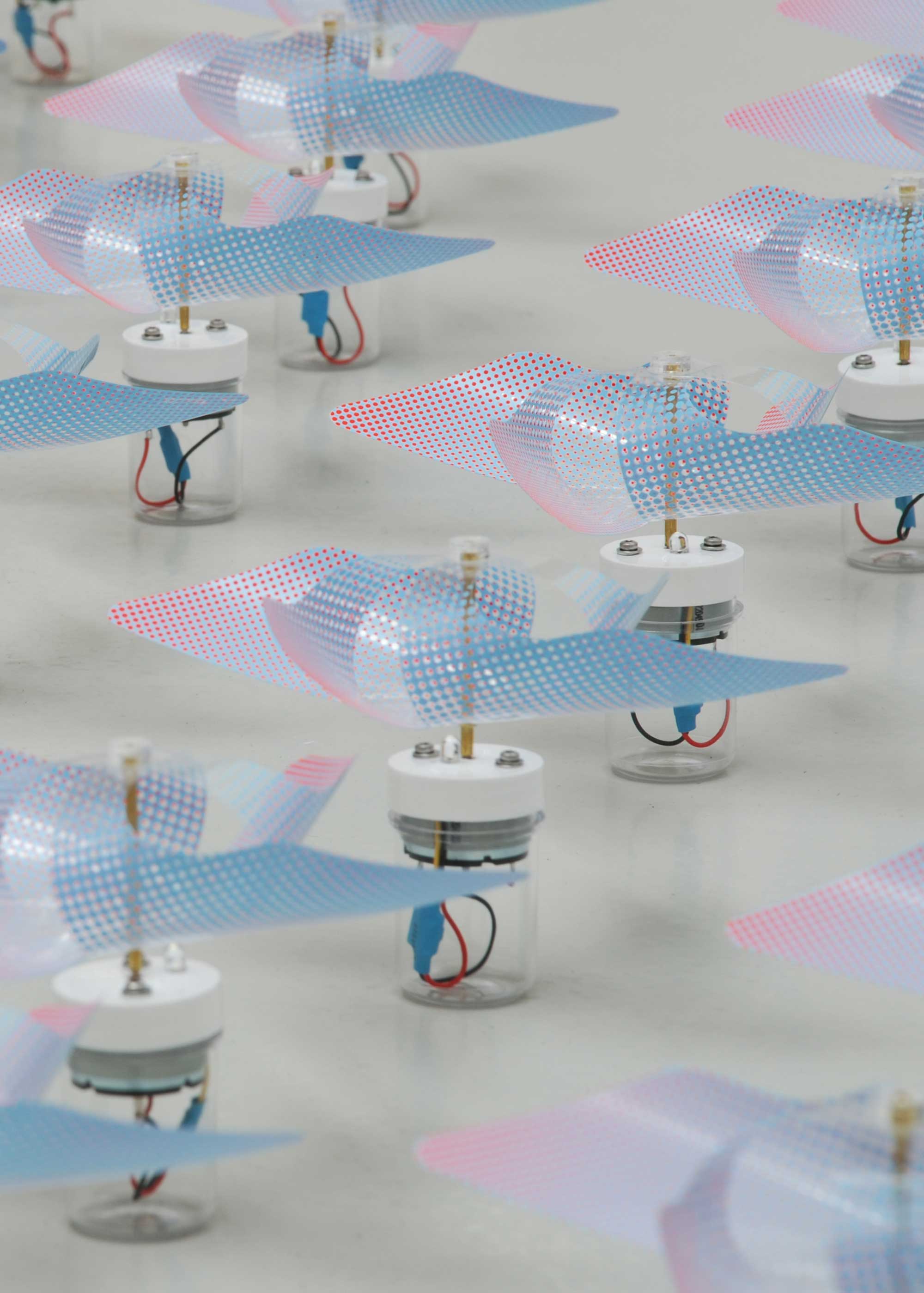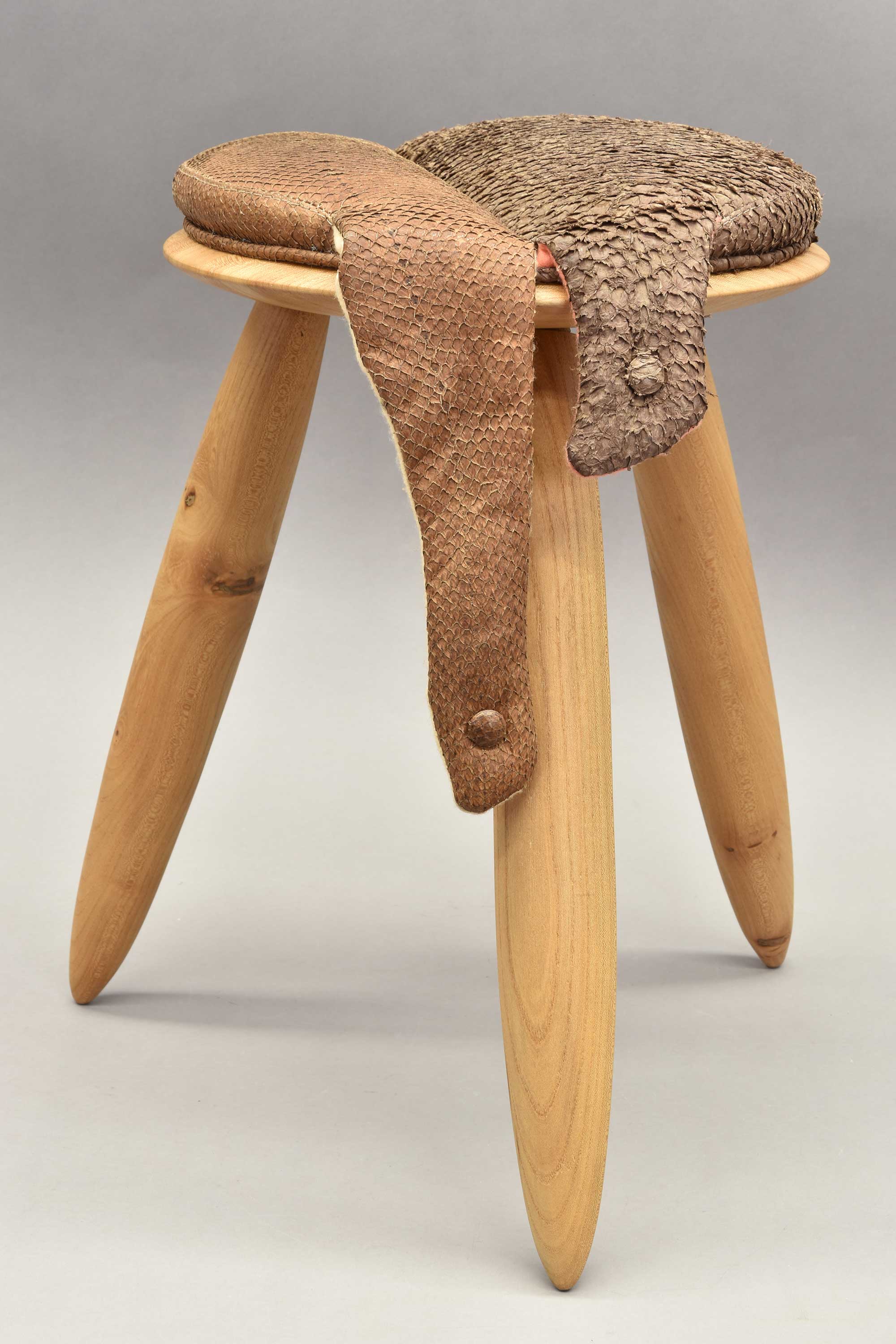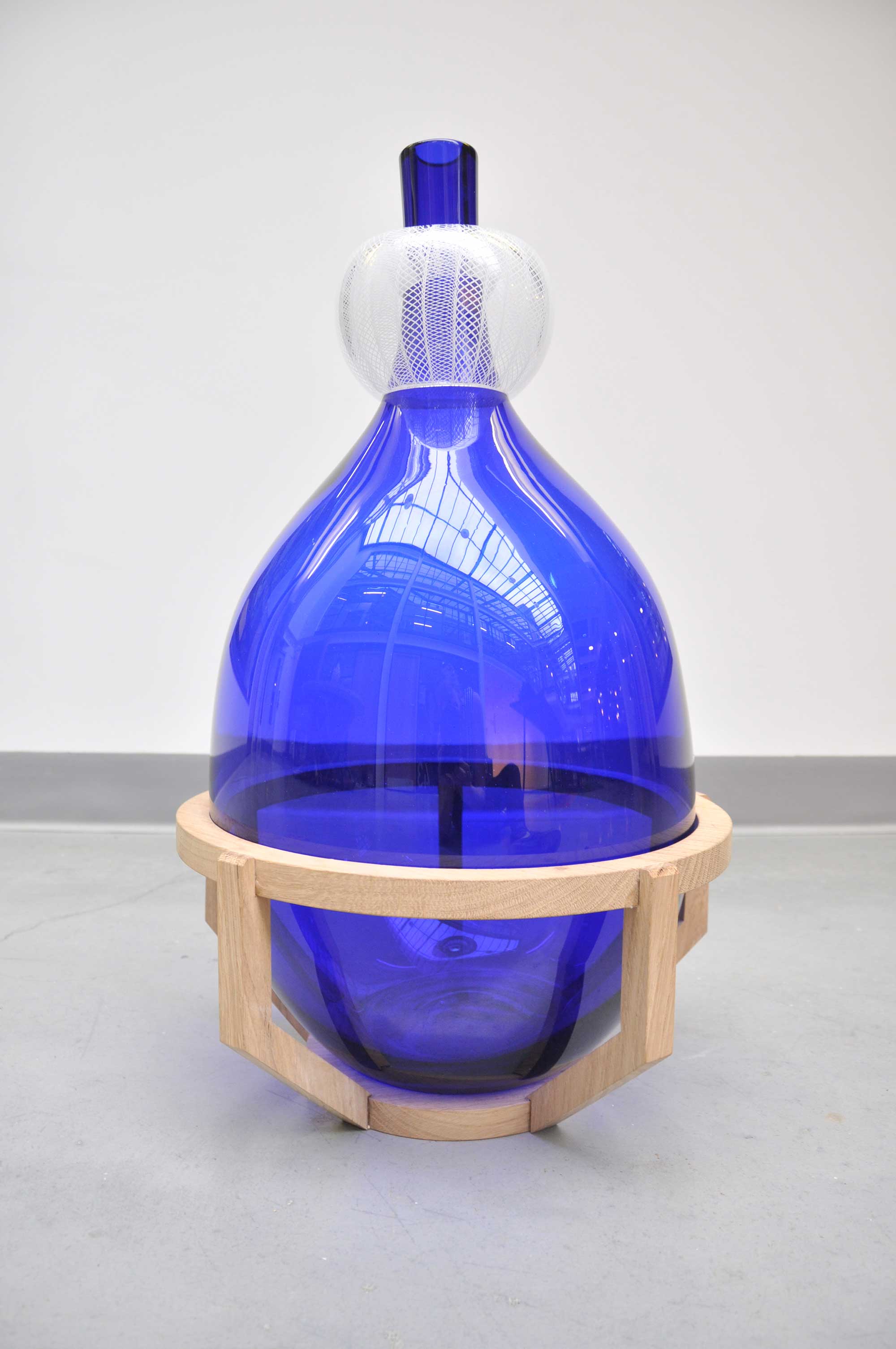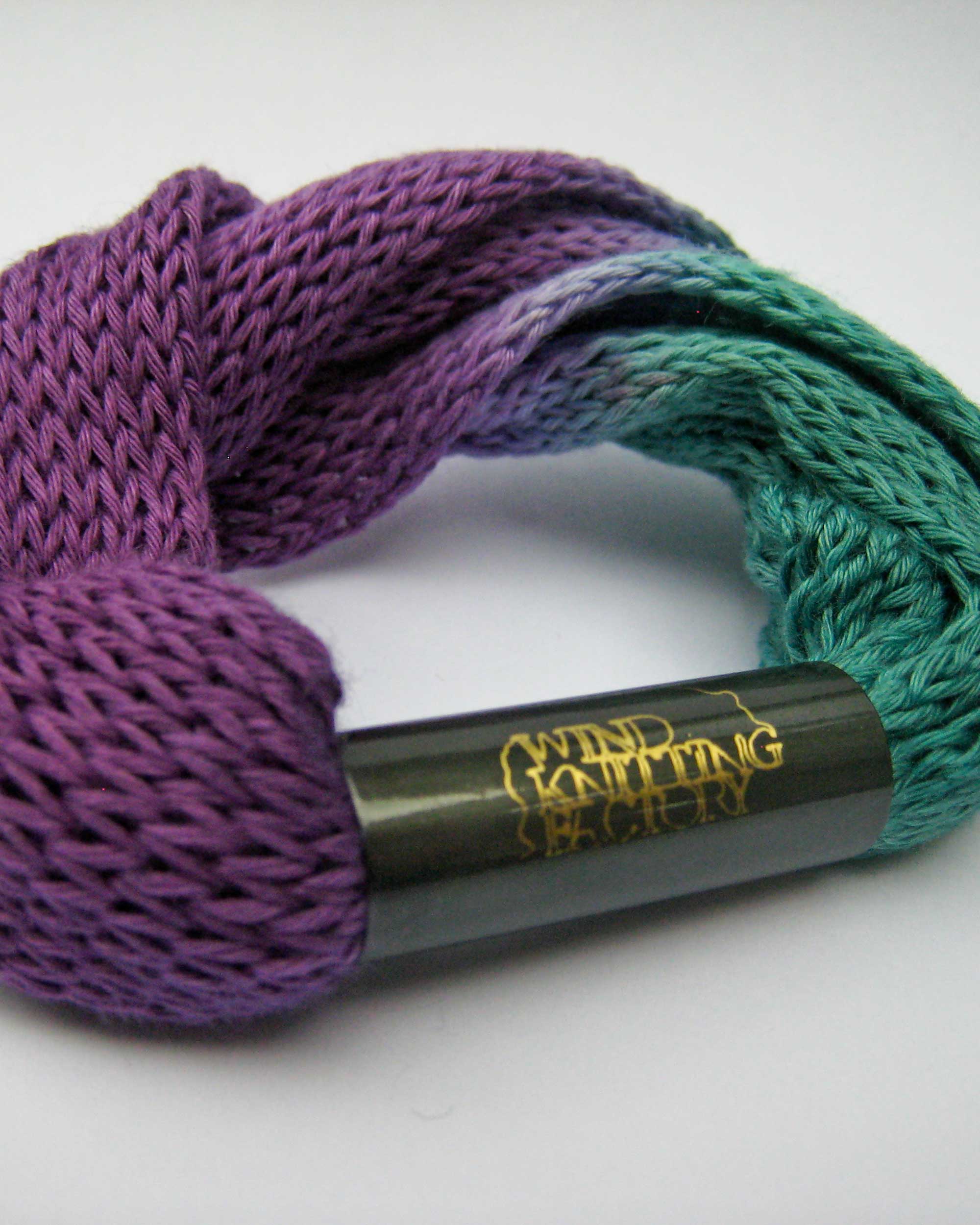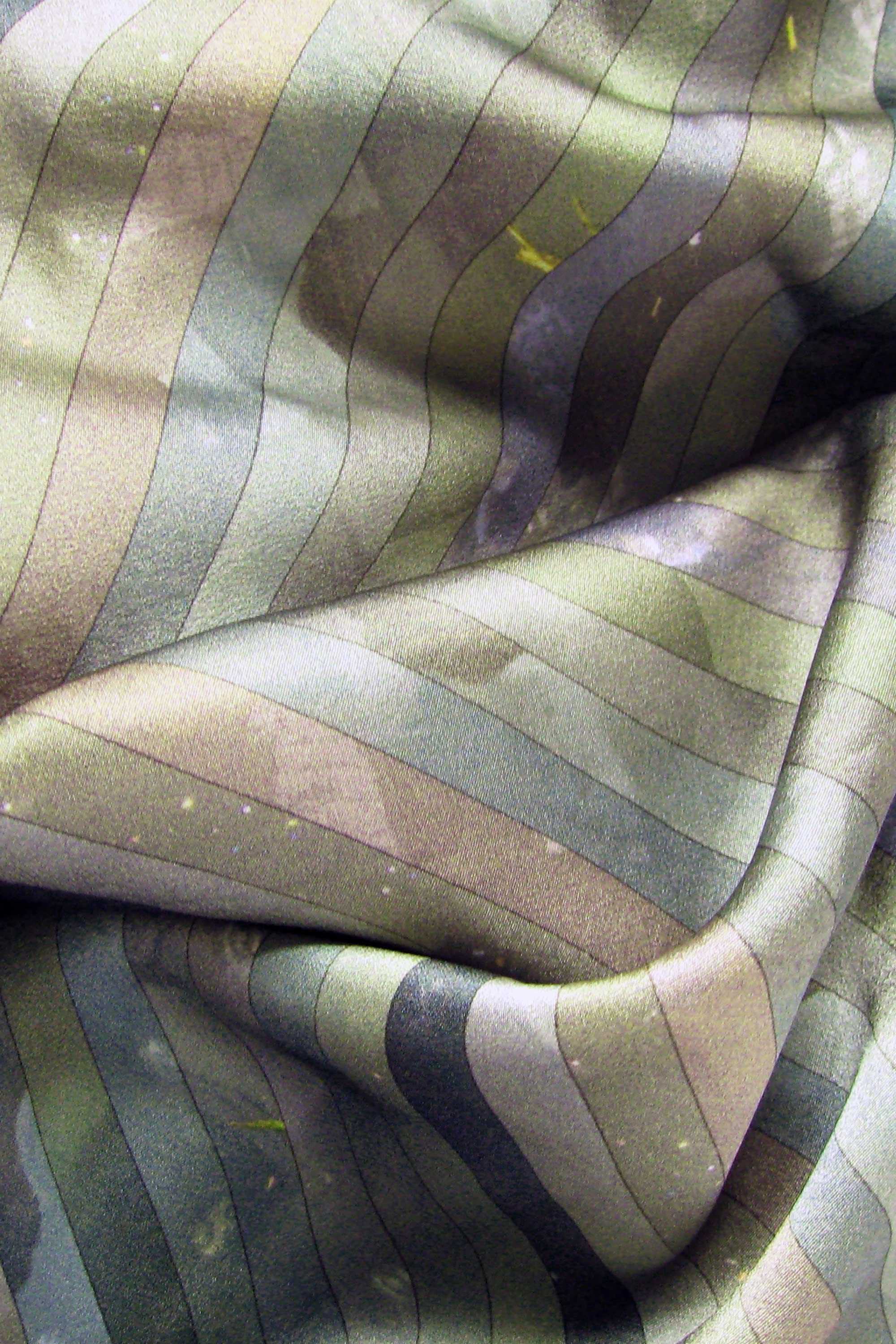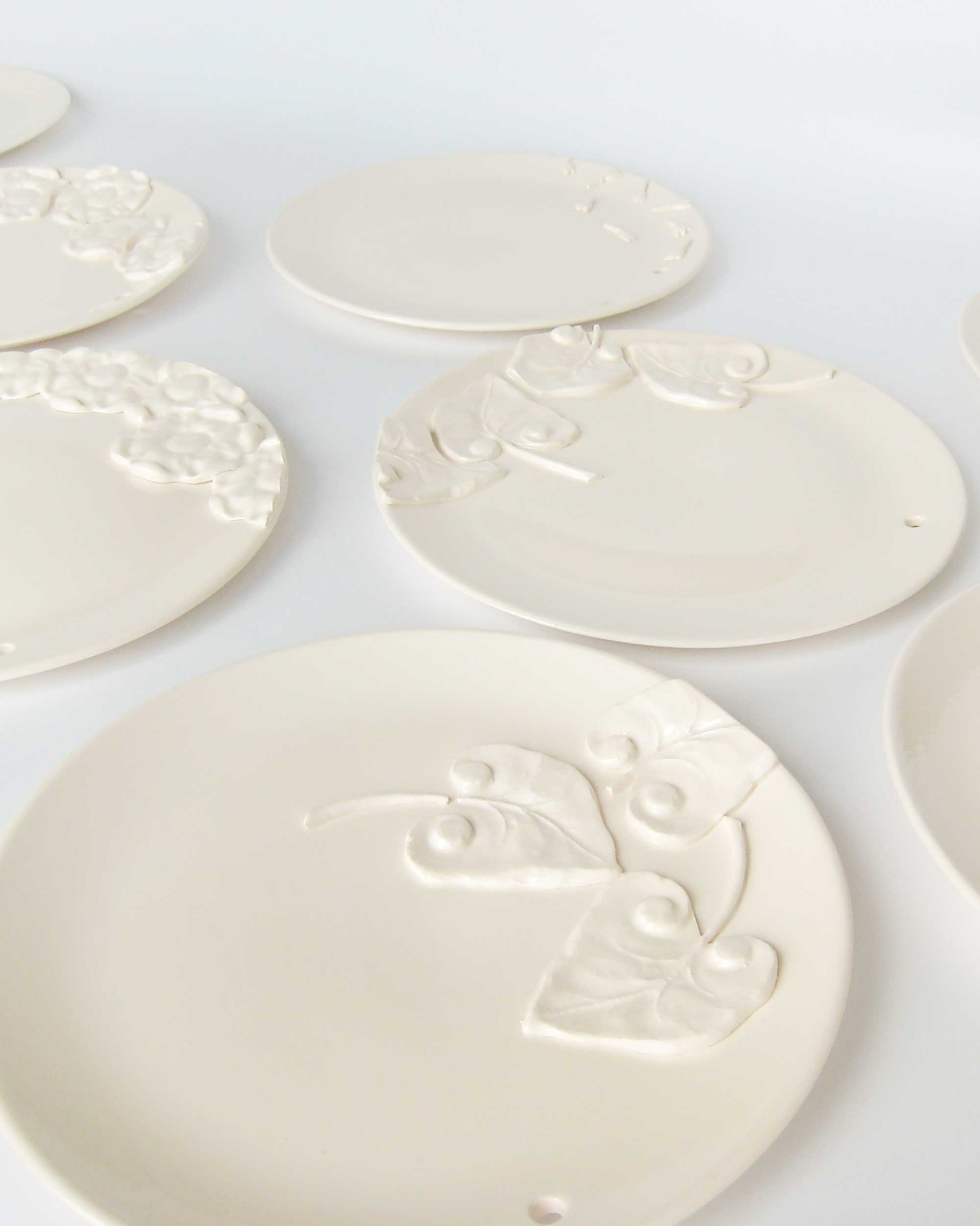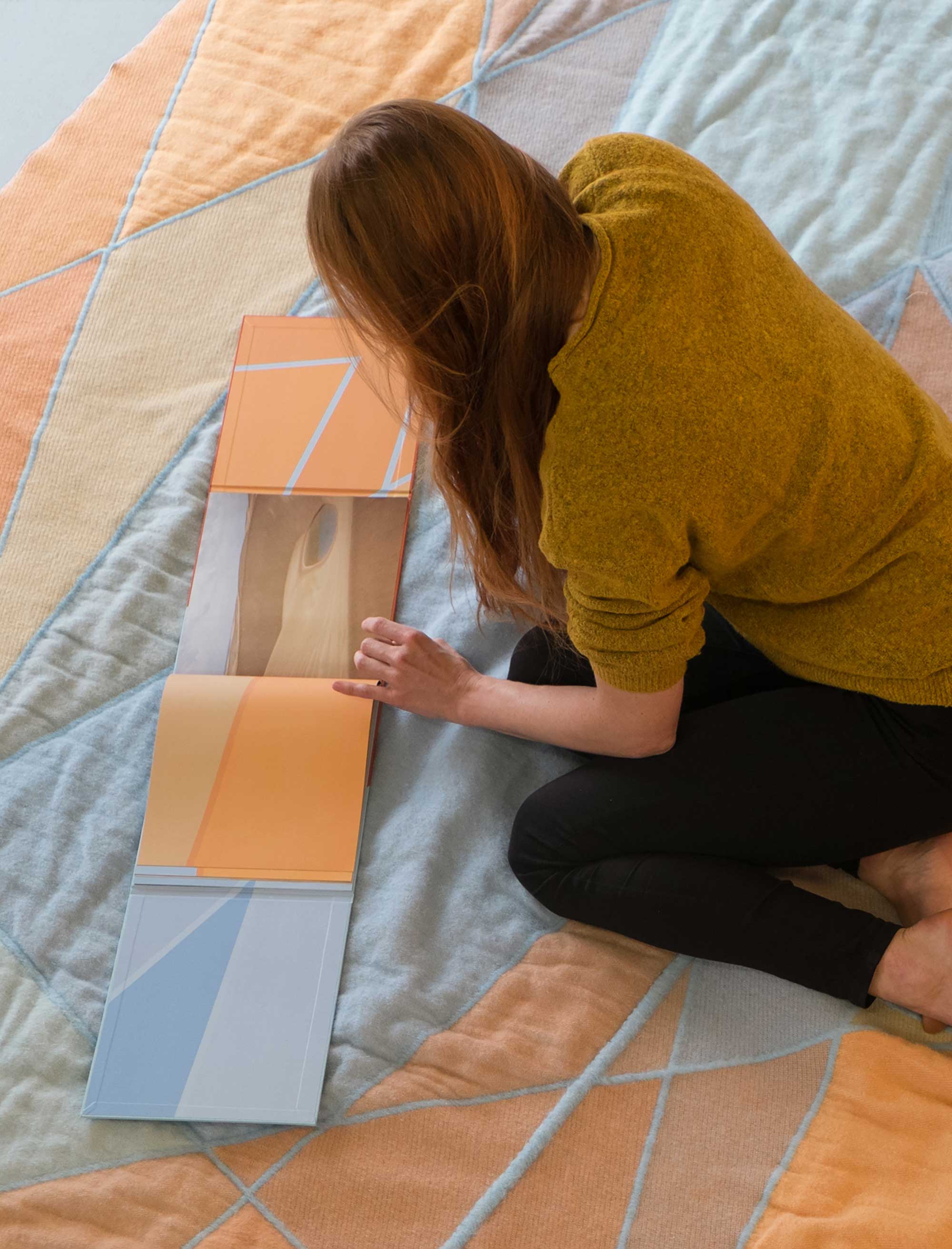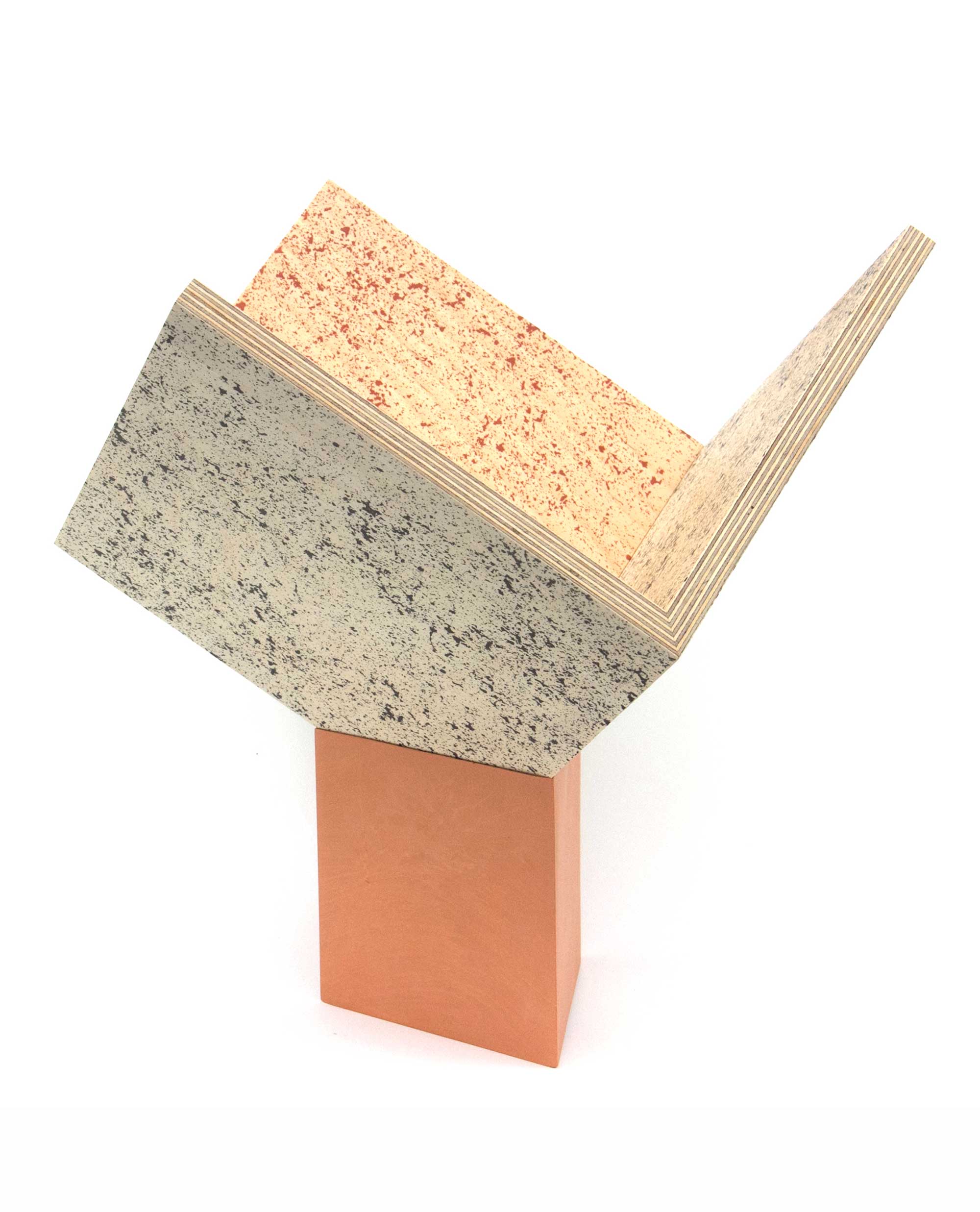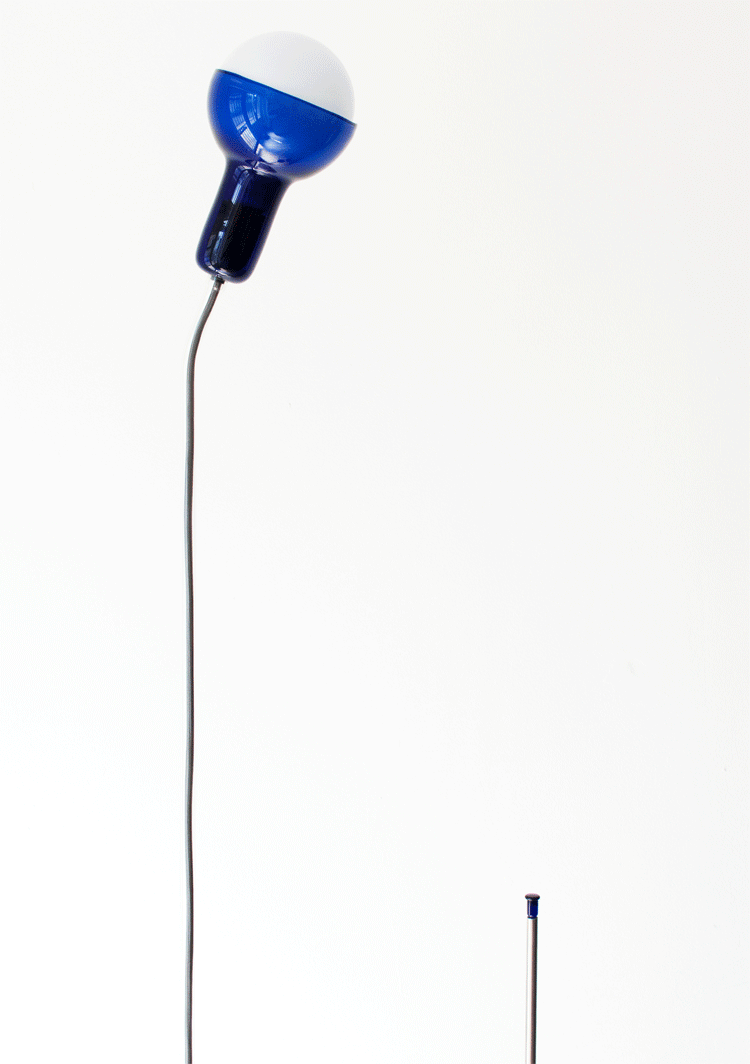Windworks
To establish the Windworks furniture collection, the studio initiated a collaboration between two historic windmills from the Zaanse Schans (NL) and the Wind Knitting Factory. The Zaanse Schans is an area located on the river ‘Zaan’ in the province of Noord Holland and is home to a collection of well-preserved historic windmills. Each one of these produces a different kind of raw material. There is a colour mill called ‘De Kat’ (the Cat), which has been fitted out to grind colouring materials, as well as a sawmill called ‘Het Jonge Schaap’ (the Young Sheep), that saws planks from trees to old Dutch measurements.
Windworks
To establish the Windworks furniture collection, the studio initiated a collaboration between two historic windmills from the Zaanse Schans (NL) and the Wind Knitting Factory. The Zaanse Schans is an area located on the river ‘Zaan’ in the province of Noord Holland and is home to a collection of well-preserved historic windmills. Each one of these produces a different kind of raw material. There is a colour mill called ‘De Kat’ (the Cat), which has been fitted out to grind colouring materials, as well as a sawmill called ‘Het Jonge Schaap’ (the Young Sheep), that saws planks from trees to old Dutch measurements.
Windworks
To establish the Windworks furniture collection, the studio initiated a collaboration between two historic windmills from the Zaanse Schans (NL) and the Wind Knitting Factory. The Zaanse Schans is an area located on the river ‘Zaan’ in the province of Noord Holland and is home to a collection of well-preserved historic windmills. Each one of these produces a different kind of raw material. There is a colour mill called ‘De Kat’ (the Cat), which has been fitted out to grind colouring materials, as well as a sawmill called ‘Het Jonge Schaap’ (the Young Sheep), that saws planks from trees to old Dutch measurements.
Windworks
To establish the Windworks furniture collection, the studio initiated a collaboration between two historic windmills from the Zaanse Schans (NL) and the Wind Knitting Factory. The Zaanse Schans is an area located on the river ‘Zaan’ in the province of Noord Holland and is home to a collection of well-preserved historic windmills. Each one of these produces a different kind of raw material. There is a colour mill called ‘De Kat’ (the Cat), which has been fitted out to grind colouring materials, as well as a sawmill called ‘Het Jonge Schaap’ (the Young Sheep), that saws planks from trees to old Dutch measurements.
Windworks
To establish the Windworks furniture collection, the studio initiated a collaboration between two historic windmills from the Zaanse Schans (NL) and the Wind Knitting Factory. The Zaanse Schans is an area located on the river ‘Zaan’ in the province of Noord Holland and is home to a collection of well-preserved historic windmills. Each one of these produces a different kind of raw material. There is a colour mill called ‘De Kat’ (the Cat), which has been fitted out to grind colouring materials, as well as a sawmill called ‘Het Jonge Schaap’ (the Young Sheep), that saws planks from trees to old Dutch measurements.
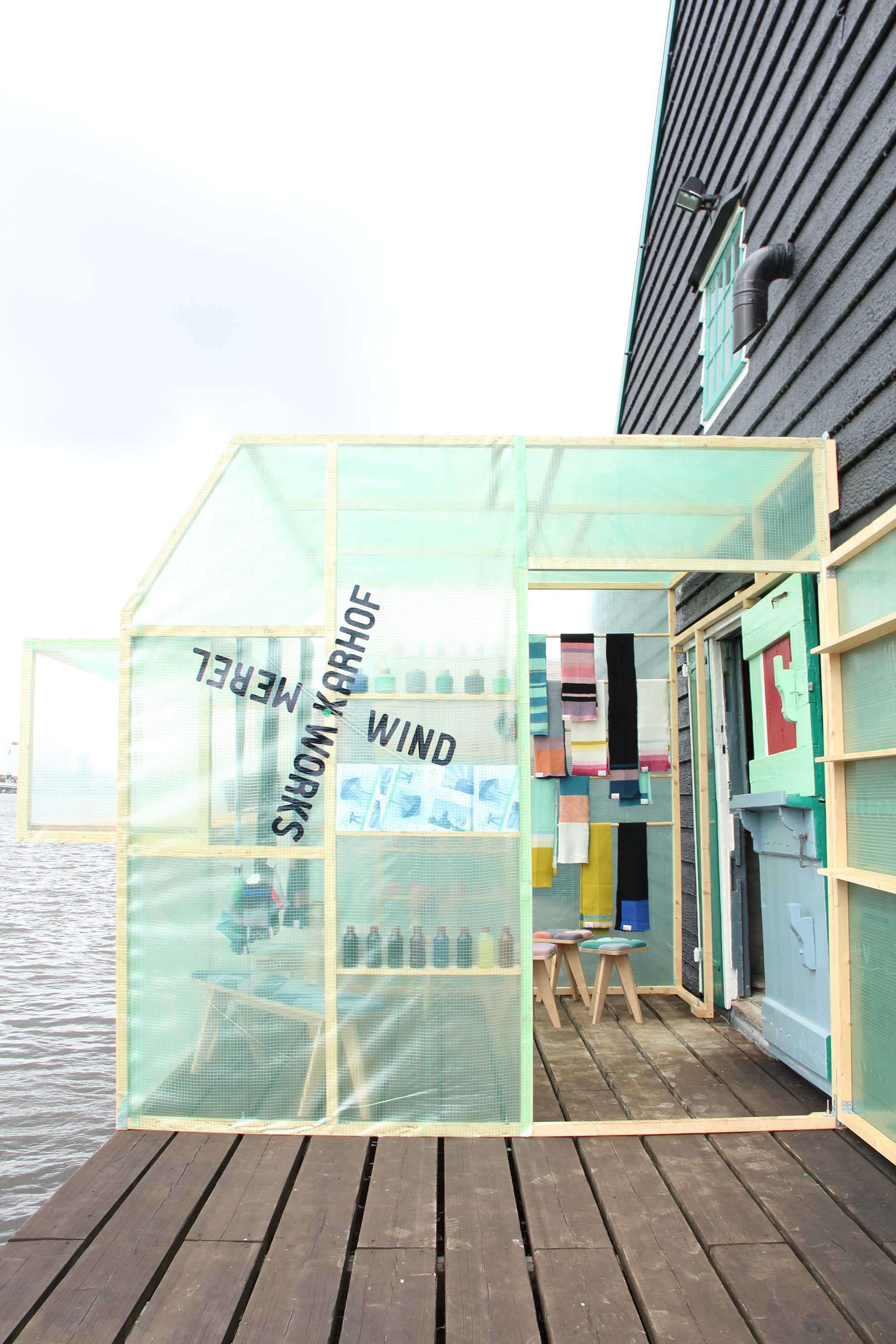

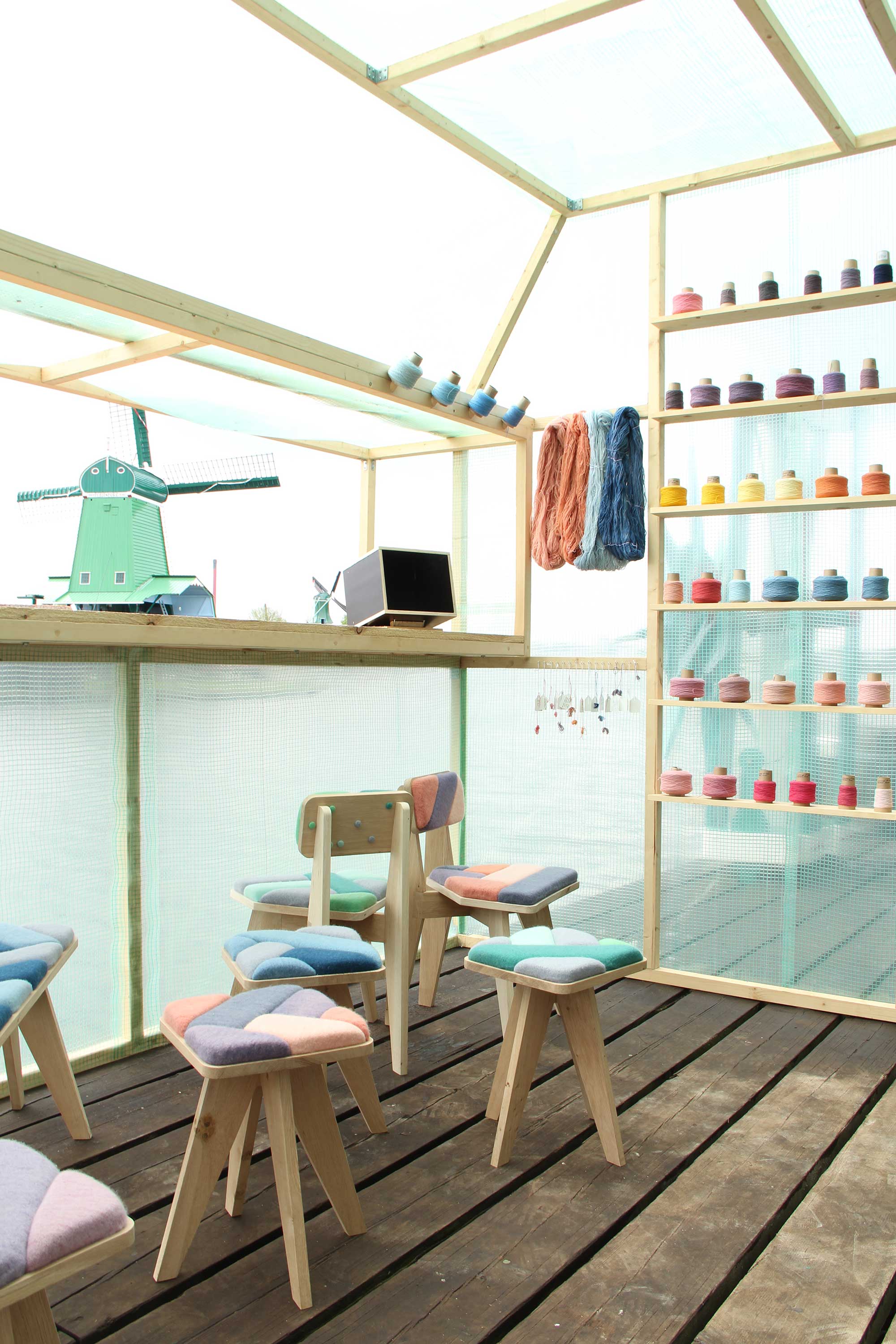
For the occasion of this collaboration, the studio designed a series of furniture pieces. The wood is sawn by the wind; the yarn is dyed with natural dyes, grounded by the colour mill. After the dyeing process, the ‘Wind Knitting Factory’ knits the yarns, and with each harvest, the wood structures are upholstered.
For this special event, Karhof built the new ‘Wind Knitting Factory 2.0’ that incorporates two new features; a pennon, that gives the machine the facility to turn away from the wind when the speed gets too high, and a new machanism that pulls the knitwear down, therefore allowing it to operate independently.
Windworks shows a production triptych between three windmills and it makes visible what can be produced with wind power. It shows how windmills working together can become a complete and holistic industry.
For the occasion of this collaboration, the studio designed a series of furniture pieces. The wood is sawn by the wind; the yarn is dyed with natural dyes, grounded by the colour mill. After the dyeing process, the ‘Wind Knitting Factory’ knits the yarns, and with each harvest, the wood structures are upholstered.
For this special event, Karhof built the new ‘Wind Knitting Factory 2.0’ that incorporates two new features; a pennon, that gives the machine the facility to turn away from the wind when the speed gets too high, and a new machanism that pulls the knitwear down, therefore allowing it to operate independently.
Windworks shows a production triptych between three windmills and it makes visible what can be produced with wind power. It shows how windmills working together can become a complete and holistic industry.
For the occasion of this collaboration, the studio designed a series of furniture pieces. The wood is sawn by the wind; the yarn is dyed with natural dyes, grounded by the colour mill. After the dyeing process, the ‘Wind Knitting Factory’ knits the yarns, and with each harvest, the wood structures are upholstered.
For this special event, Karhof built the new ‘Wind Knitting Factory 2.0’ that incorporates two new features; a pennon, that gives the machine the facility to turn away from the wind when the speed gets too high, and a new machanism that pulls the knitwear down, therefore allowing it to operate independently.
Windworks shows a production triptych between three windmills and it makes visible what can be produced with wind power. It shows how windmills working together can become a complete and holistic industry.
For the occasion of this collaboration, the studio designed a series of furniture pieces. The wood is sawn by the wind; the yarn is dyed with natural dyes, grounded by the colour mill. After the dyeing process, the ‘Wind Knitting Factory’ knits the yarns, and with each harvest, the wood structures are upholstered.
For this special event, Karhof built the new ‘Wind Knitting Factory 2.0’ that incorporates two new features; a pennon, that gives the machine the facility to turn away from the wind when the speed gets too high, and a new machanism that pulls the knitwear down, therefore allowing it to operate independently.
Windworks shows a production triptych between three windmills and it makes visible what can be produced with wind power. It shows how windmills working together can become a complete and holistic industry.
For the occasion of this collaboration, the studio designed a series of furniture pieces. The wood is sawn by the wind; the yarn is dyed with natural dyes, grounded by the colour mill. After the dyeing process, the ‘Wind Knitting Factory’ knits the yarns, and with each harvest, the wood structures are upholstered.
For this special event, Karhof built the new ‘Wind Knitting Factory 2.0’ that incorporates two new features; a pennon, that gives the machine the facility to turn away from the wind when the speed gets too high, and a new machanism that pulls the knitwear down, therefore allowing it to operate independently.
Windworks shows a production triptych between three windmills and it makes visible what can be produced with wind power. It shows how windmills working together can become a complete and holistic industry.
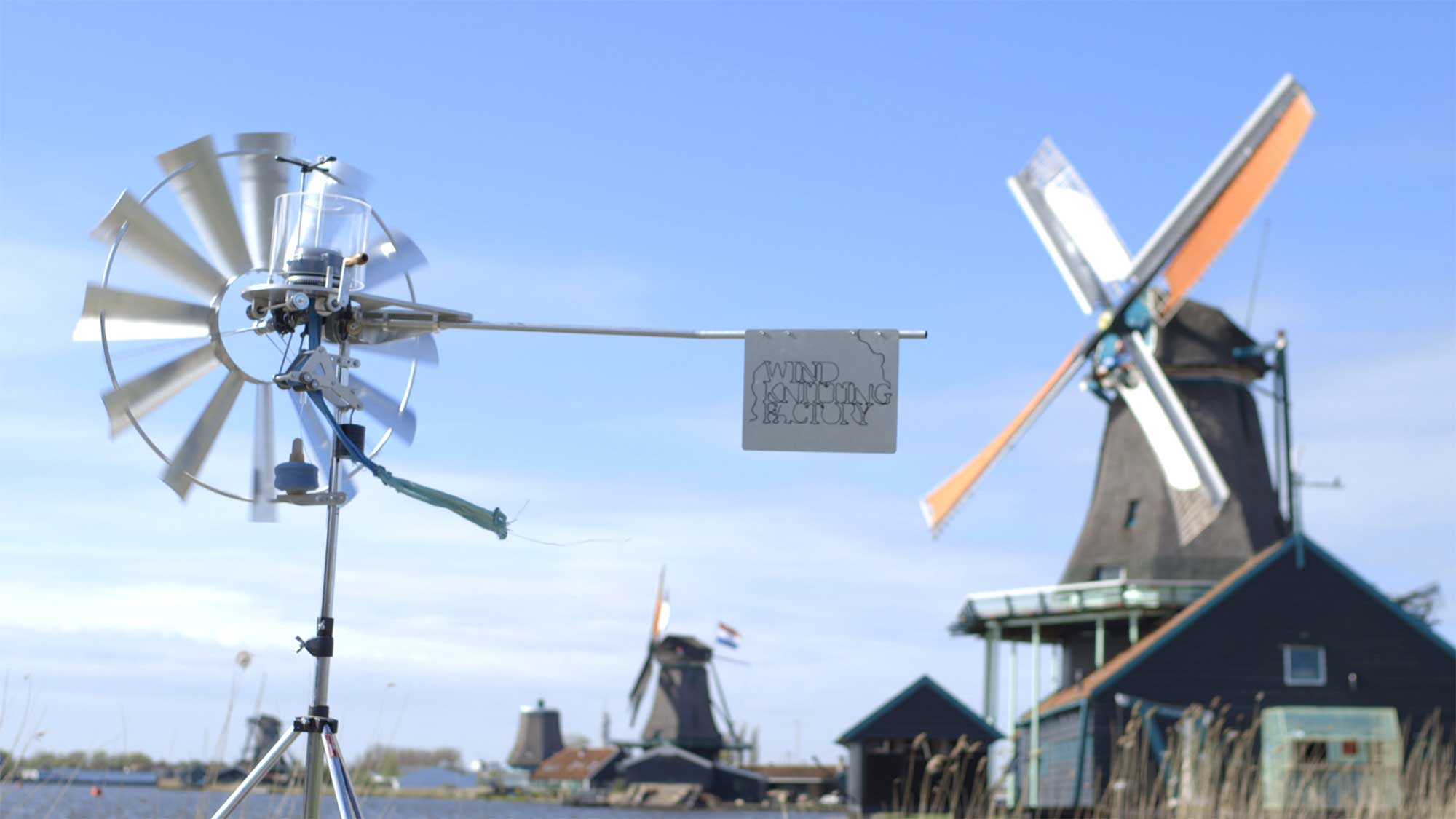

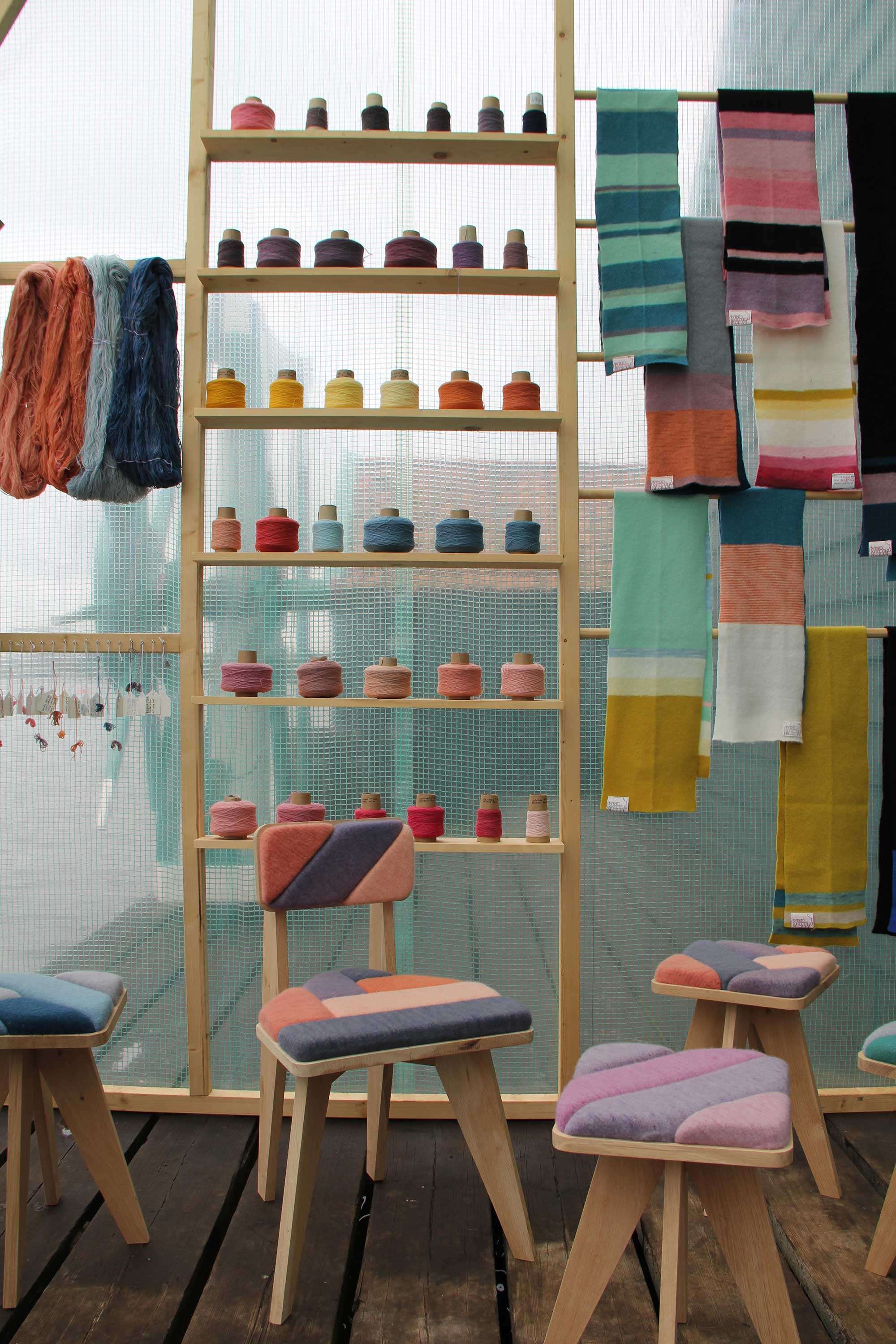



Oostzijde 355
1508 EP Zaandam
Netherlands
info@merelkarhof.nl
Oostzijde 355
1508 EP Zaandam
Netherlands
info@merelkarhof.nl
